Cultural Tourism Funding Opportunities
AIANTA collects funding opportunities that may be of interest to Indigenous or Native American tourism & hospitality enterprises looking to grow their tourism, culture, heritage, arts, agritourism or other culture and heritage programming.
Open Funding Opportunities
DOT/FHWA: Development Deployment of Innovative Technologies for Concrete Pavements
Deadline: May 20, 2024
Tourism Tip: Use innovative technologies relating to the design, production, testing, control, construction, investigation, operation and impacts of concrete pavements.
MAP Round 2 2024 Request for Proposals (RFP)
Tourism Tip: Create lasting change to activities on National Forest System lands or adjacent public lands.
Rural Development Broadband ReConnect Program
Deadline: May 21, 2024
Tourism Tip: Use loans or grant funds for costs of construction, improvement or acquisition of facilities and equipment needed to provide broadband service.
National Endowment for the Humanities: Cultural and Community Resilience
Deadline: May 22, 2024
Tourism Tip: Address the impacts of climate change by safeguarding cultural resources and fostering cultural resilience through identifying, documenting and/or collecting cultural heritage and community experiences.
First Nations Development Institute Advancing Tribal Nature-Based Solutions
Deadline: May, 22, 2024
Tourism Tip: to support climate action through nature-based solutions based on Native knowledge.
Western SARE: Research and Education Invitation for Proposal
Deadline: May 23, 2024
Tourism Tip : Develop a project incorporating research and education that brings together a team of researchers, students, ag professionals and producers.
Natural Resources Conservation Service Grazing Lands Conservation Initiative
Deadline: May 26, 2024
Tourism Tip : Develop a more strategic and comprehensive approach to support grazing systems, reach underserved producers and address climate change.
NPS Historic Preservation Fund Tribal Historic Preservation Office Grants
Deadline: May 30, 2024
Tourism Tip : Preserve historic properties and cultural traditions through the designation of a Tribal Historic Preservation Office or annual THPO grant funding.
Clean Energy Technology Deployment on Tribal Lands
Tourism Tip : Install clean energy technology and/or energy efficiency measures on Tribal lands.
Newman’s Own Foundation: Food Justice for Kids Prize – Indigenous Food Justice
Tourism Tip : Reclaim traditional food practices and systems to enable Indigenous children to learn about, grow, gather and cook Native foods.
USDA Rural Cooperative Development Grants
Deadline: May 31, 2024
Tourism Tip : S tart, improve or expand rural cooperatives and other mutually-owned businesses to help improve economic conditions in rural areas.
Union Pacific Foundation Community Ties Giving Program: Local Grants
Tourism Tip : Create, sustain or expand artistic and cultural experiences, provide recreational opportunities or preserve and restore nature along the UP footprint.
NEH Public Impact Projects at Smaller Organizations (PIPSO)
Deadline: June 12, 2024 (anticipated)
Tourism Tip: Use interpretive strategies to advance your public programming , strengthen interpretive skill sets or enhance community engagement.
DOE Clean Energy to Communities
Deadline: June 14, 2024 (anticipated)
Tourism Tip: Help your community understand different institutional contexts, resources, challenges, opportunities and ambitions to implement clean energy.
USFS Tribal Wildlife Grant Program
Deadline: June 21, 2024
Tourism Tip : Use for planning or managing programs to benefit wildlife and their habitat, especially those with cultural or traditional importance. Funding can also be used for mapping, surveys and public education.
National Forest Foundation Matching Awards Program
Tourism Tip : Provide o pportunities for your community to benefit from activities on National Forest System lands or adjacent public lands.
Bank of America Charitable Foundation
Tourism Tip : Focus on economic mobility in small businesses and support for community arts and cultural institutions.
USDA Rural Energy for America Renewable Energy Systems & Energy Efficiency Improvement Loans & Grants
Deadlines: June 30, and September 30, 2024
Tourism Tip: Use guaranteed loan financing or grant funding for renewable energy systems or to make energy efficiency improvements.
National Credit Union Administration Community Development Revolving Loan Fund
Deadline: July 1, 2024
Tourism Tip: Use loans and technical assistance grants to help your credit union support the communities and tourism enterprises they operate.
NEA Grants for Arts – Part II
Deadline: July 11, 2024
Tourism Tip: Use the funds to assist with art projects that tell the story of your place and culture. Grants are available for arts projects in a variety of artistic disciplines.
National Forest Foundation’s Collaborative Capacity Program for Forests & Communities
Tourism Tip: Support collaboration-based activities to benefit forests and grasslands currently managed by the US Forest Service through the National Forest System.
NPS Cultural Resources Management Services
Deadline: July 15, 2024
Tourism Tip: Work in partnership with the NPS to conduct various activities, including, but not limited to, studies outlined in the NPS Cultural Resource Management Guidelines.
VIA Art Fund Artistic Production Grants
Deadline: July 18, 2024
Tourism Tip: Awards to individual artists, nonprofit organizations or institutions to support new artistic commissions outside museum or gallery walls, within the public realm or in nontraditional exhibition environments.
O’Reilly Automotive Foundation Inc.
Deadline: July 31, 2024
Tourism Tip: In communities with O’Reilly Auto Parts companies, create a project that addresses economic stability in your tourism programs.
NEA Our Town Grants
Deadline: August 1, 2024
Tourism Tip: Develop a placemaking project that integrates arts, culture, and design activities to strengthen communities over the long term.
America Walks: Community Change Grants
Deadline: October 17, 2024
Tourism Tip: Use funds to create change and walking opportunities within your community.
NDN Collective Community Action Fund
Deadline: October 31, 2024
Tourism Tip : Support climate disaster response efforts to climate disasters such as flooding, fires and earthquakes.
Western SARE Professional Development Program
Deadline: November 1, 2024
Tourism Tip: Engage professionals to conduct educational programs and activities that incorporate environmental, economic and social dimensions of agriculture.
Receive AIANTA Updates
AIANTA Newsletters
View the AIANTA Newsletter Archive for more information.
Guides & Publications
USDA Resource Guide for American Indians and Alaska Natives
The USDA recently published a Resource Guide for American Indians and Alaska Natives (AI/AN) to provide tribal leaders and tribal citizens, 1994 Land-Grant Tribal Colleges and Universities, AI/AN businesses and non-governmental organizations serving AI/AN communities with a tool for navigating USDA resources. This guide provides readers with a comprehensive summary of USDA Programs.
Recreation Economy at USDA Economic Development Resources for Rural Communities
USDA’s Forest Service (FS), Rural Development (RD) and the National Institute for Food and Agriculture (NIFA) developed this resource guide for rural communities to identify resources that develop the recreation economy. The report forecasts that interest in outdoor recreation will continue over the next 30 years.
Resources for Rural Entrepreneurs: A Guide to Planning, Adapting, and Growing Your Business
In 2022, in collaboration with a network of federal partners, the USDA Resources for Rural Entrepreneurs guide provides resources for start-ups and already-established rural businesses. RD offers more than 40 loan, grant, and technical assistance programs to help improve the economy and quality of life in rural America. Many of these programs can also support community-based entrepreneurial planning and growth. USDA partners with community leaders and developers, local, state and Tribal governments, cooperatives, nonprofits, private organizations and a nationwide network of participating lenders skilled at building local economies.
Stronger Together, Federal funding and planning strategies designed to promote sustainable economic development in rural America
In 2022, the U.S. Department of Commerce Economic Development Administration (EDA) and the U.S. Department of Agriculture Rural Development (USDA RD) published Stronger Together a joint planning resource guide to help community organizations access USDA and EDA resources to build strategies to boost economic development in rural America. The guide is separated into four key focus areas: Planning and technical assistance, Infrastructure and broadband expansion, Entrepreneurship and business assistance and Workforce development and livability.
Federal Resources for Native Arts & Cultural Activities
In 2020, the National Endowment for the Arts published the Federal Resources for Native Arts & Cultural Activities, a guide providing information to connect Native communities to resources that can sustain and invigorate arts and cultural heritage initiatives. It is a consolidation of opportunities offered by federal agencies for organizations looking for funding and other resources to support Native arts and culture activities.
Grants.gov provides a unified site for interaction between grant applicants and the U.S. federal agencies that manage grant funds. The site allows applicants to search for funds by agency.
Federal Agencies
- U.S. Department of Commerce
- Economic Development Administration (EDA)
- Small Business Administration
- Regional Innovation Strategies
- Minority Business Development Agency
U.S. Department of Interior
- Bureau of Indian Affairs
- National Park Service
- Fish and Wildlife Service
- Bureau of Land Management
- Bureau of Reclamation
Bureau of Indian Affairs (U.S. Department of Interior)
- Office of Indian Energy and Economic Development
- Division of Transportation
- Division of Economic Development
National Park Service (Department of Interior)
- Grants & Financial Assistance
- Tourism Program
- Tribal Preservation Program
- National Historic Landmarks
- National Register of Historic Places
- Rivers, Trails and Conservation Assistance Program
- Conservation and Outdoor Recreation Division
- Cultural Resources
U.S. Department of Housing and Urban Development (HUD) www.hud.gov/program_offices/public_indian_housing/ih
- Office of Economic Development
- Indian Community Development Block Grant
U.S. Department of Health and Human Services
- Administration for Native Americans (ANA)
- Social and Economic Development Strategies (SEDS)
- Sustainable Employment and Economic Development Strategies (SEEDS)
- Native Youth Initiative for Leadership, Empowerment, and Development (I-LEAD)
U.S. Department of Agriculture (USDA)
- Business & Industry Loan Guarantees
- Community Connect Grants
- Rural Business Investment Program
- Rural Economic Development Loan & Grant Program
- Rural Microentrepreneur Assistance Program
- Socially-Disadvantaged Groups Grant
- Strategic Economic and Community Development
- Value-Added Producer Grants
- U.S. Forest Service (trail construction, archaeology)
National Endowment for the Arts (NEA)
- Our Town ($25,000 – $200,000)
- Challenge America ($10,000 underserved populations)
- Art Works ($10,000 – $100,000)
National Endowment for the Humanities (NEH)
- Division of Preservation and Access
- Documenting Endangered Languages
- Sustaining Cultural Heritage Collections
- Preservation Assistance Grants for Smaller Institutions
- Office of Challenge Programs
Institute of Museum and Library Sciences (IMLS)
- Native American Library Services: Basic Grants
- Native American Library Services: Enhancement Grants
- Native Hawaiian Library Services Grants
- Museums for America
- Inspire! Grants for Small Museums
- Museums Empowered
- National Leadership Grants for Museums
- Laura Bush 21st Century Librarian Program
- Museum Assessment Program
- Accelerating Promising Practices for Small Libraries
U.S. Department of Transportation www.transportation.gov/grants
- Office of Infrastructure Finance and Innovation
- National Scenic Byways Program
- Office of Tribal Transportation
Environmental Protection Agency (EPA)
- Building Blocks for Sustainable Communities
State Tourism, Arts & Economic Development Agencies
Arts.gov State and Regional Arts Councils arts.gov/partners/state-regional
California Arts Council arts.ca.gov/grants
California Governor’s Office of Business & Economic Development business.ca.gov
Montana Tourism Office marketmt.com
Nevada Arts Council: Folklife Community Grant nvartscouncil.org/grants
New Mexico Tourism Office newmexico.org/industry/work-together/grants
Oregon Tourrism traveloregon.com/grants
Additional Resources
Community Foundations www.cof.org/community-foundation-locator The Council on Foundations, founded in 1949, is a nonprofit leadership association of grantmaking foundations and corporations. Use their search tool to find local funding resources.
The Grantsmanship Center www.tgci.com The Grantsmanship Center offers training, publications and consulting to help organizations find funding. The Center provides free access to its Funding State-by-State database listing each state’s top grantmaking foundations, community foundations, corporate giving programs and State website homepages.
Candid (formerly the Foundation Center and GuideStar) candid.org/
Candid is an online source for grants available through private foundations, corporate foundations, and other nonprofits that accept grant proposals. It also provides research on nonprofits and guides, like the 990 Finder.

Bureau of Indian Affairs
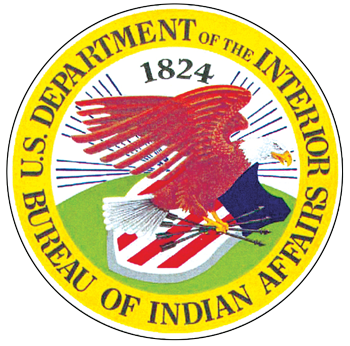
Juan Bautista de Anza National Historic Trail
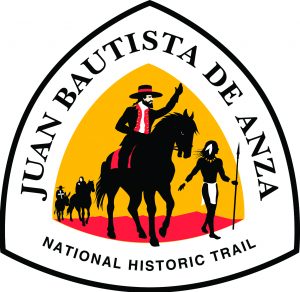
Native American Agriculture Fund
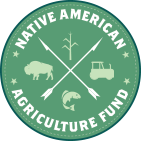
Lewis & Clark National Historic Trail
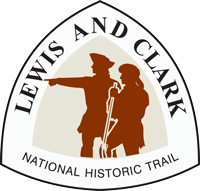
Bureau of Land Management
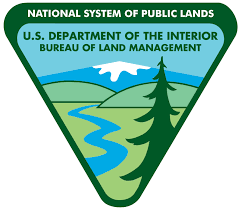
National Endowment of the Arts
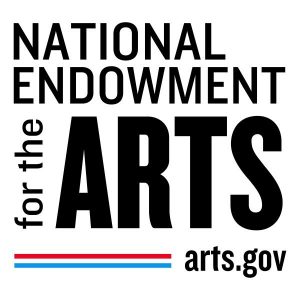
National Park Service
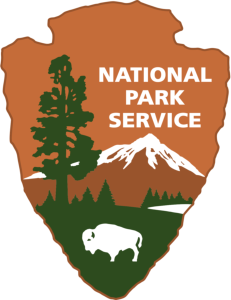
United States Forest Service
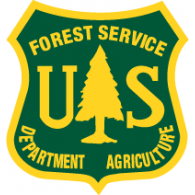
Department of Military and Veterans Affairs
Official site of the state of new jersey.
- FAQs Frequently Asked Questions
The State of NJ site may contain optional links, information, services and/or content from other websites operated by third parties that are provided as a convenience, such as Google™ Translate. Google™ Translate is an online service for which the user pays nothing to obtain a purported language translation. The user is on notice that neither the State of NJ site nor its operators review any of the services, information and/or content from anything that may be linked to the State of NJ site for any reason. - Read Full Disclaimer
- Search close
New Jersey Historic Trust Affiliated with the Department of Community Affairs
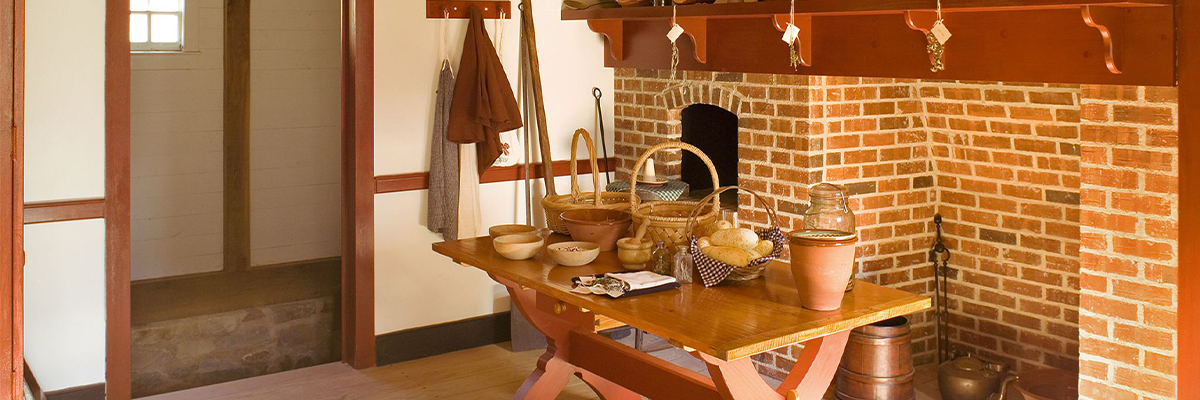
Heritage Tourism Grants
Application & instructions.
All applicants are required to submit the online application, as well as a USB with all required attachments by the application deadline of April 18, 2024 at 4:00pm. The Trust has also provided Word and PDF versions of the application so that applicants can view the application in its entirety. We highly recommend that you type your answers into the Word version of the application first, and then copy/paste into the online application to avoid any potential loss of data.
Click here for the Online Heritage Tourism Application
Click here for the Word version of the Heritage Tourism Application
Click here for the PDF version of the Heritage Tourism Application
Below is a link to the Heritage Tourism Supporting Documents Checklist. This checklist includes all of the attachments for the Heritage Tourism application. The attachments must be uploaded onto a USB drive and delivered either via mail or in-person to the Trust office by April 18, 2024 at 4:00pm. If you are having trouble completing all of the required attachments, please reach out to NJHT staff directly.
Click here for the Heritage Tourism Supporting Documents Checklist
Grant Requests & Matching Funds
Heritage Tourism grant requests may range from $5,000 to $75,000. Grant applicants are eligible for a 3:1 funding match in which the Trust may provide up to 75% of total project costs, not to exceed $75,000. The applicant must demonstrate the ability to match 25% of the total project cost for which the grant is requested.
Eligible Applicants and Ownership Criteria
- Entities of county, municipal, or state government
- 501(c) tax exempt organizations that comply with New Jersey charity registration laws
Nonprofit organizations are not eligible to apply for projects that benefit churches and houses of worship.
All applicants must submit the signed Applicant's Governing Body/Board Resolution and Assurance form with each application. It should be included as Attachment A on the USB drive.
There are no ownership or lease requirements for Heritage Tourism grants, but if the applicant does not own the resource, they should demonstrate support for the project from the resource owners through the Owner Approval (Attachment B) and/or documentation of community support (Attachment G) on the USB drive.
Eligible Properties
For Heritage Tourism grants, at least one resource involved in the project must be either:
- Individually listed in the NJ or National Register of Historic Places
- Contributing resource to a historic district listed in the NJ or National Register OR
- Certified eligible for listing by the Deputy State Historic Preservation Officer
The property must be listed or certified eligible for listing by August 1, 2024 in order to be considered for funding in this grant round.
Eligible Activities
- Visitor-readiness assessments
- Visitor evaluations and/or development of performance evaluation measures
- Interpretive planning for one or multiple sites and/or to develop and enhance linkages between sites
- Design and fabrication of interpretive signage or literature
- Marketing plans and studies
- Design and fabrication of marketing materials
- Training and workshops, including speaker honoraria, that create, foster, or enhance linkages between sites.
If a heritage tourism planning activity other than those listed above is proposed, please consult with staff to determine if it is an eligible activity.
Please see the Grant Guidelines for a list of ineligible activities. Contact Trust staff if you do not see your proposed activity listed.
Criteria for Funding
The following criteria will be used to evaluate and rank applications for these grant funds:
- Degree to which the project enhances or benefits the visitor experience at the resource(s)
- Degree to which the project fosters the goals and objectives of the New Jersey Heritage Tourism Plan
- Degree to which the project addresses the development of heritage tourism within an already existing plan or aims to create a broader regional tourism plan or initiative
- Project concept and team, including: the quality and appropriateness of the project, proposed consultants, budget, and schedule
- Organizational ability, including: the degree to which the applicant will build upon this proposal and continue to foster heritage tourism, and the availability of matching funds
- Public benefit, including: potential to reach new audiences, potential to promote other cultural and heritage tourism activities, ability to create links between multiple sites, demonstrated community support, distribution of funds throughout the state and to a variety of projects, and ability of this grant to make a difference in the quality of this project
Application Attachments
Below are links to the application attachments for the Heritage Tourism grant application:
Owner Approval
Applicant's Governing Body/Board Resolution
Project Expenditure Worksheet
Image X of Y
- Skip to global NPS navigation
- Skip to the main content
- Skip to the footer section

Exiting nps.gov
Grants for cultural resources, consultation, and repatriation.
Last updated: January 26, 2024
Appalachian Regional Commission
- Data Overview of the Appalachian Region
- Appalachian States
- Appalachian Counties Served by ARC
- County Economic Status and Distressed Areas in Appalachia
- Tribal Communities in the Appalachian Region
- Congressional Districts in Appalachia
- Local Development Districts in Appalachia
- Building Businesses
- Addressing Substance Use Disorder
- Transportation in Appalachia
- Regional Culture and Tourism
- READY Appalachia
Investments in Action
- Match Requirements for ARC Grants
- Area Development Program Open
- ARISE Initiative Open
- INSPIRE Initiative
- POWER Initiative
- WORC Initiative Open
- Academies and Institutes
- Access to Capital Program
- Appalachian Regional Energy Hub Initiative
- J-1 Visa Waiver Program
- Local Access Road Program
- Contract Opportunities
- Applicant Resources
- Grantee Resources
- Approved ARC Projects
- Research Reports
- Evaluations
- Data Report Tool
- Fact Sheets and Infographics
- Appalachian Collegiate Research Initiative
- Appalachian Entrepreneurship Academy
- Appalachian Leadership Institute Open
- Appalachian STEM Academy
- History and Work
- ARC Offices & Staff
- State Partners
- Local Development Districts
- Office of Inspector General
- Budget, Performance, and Policy
- Careers at ARC
- Internships at ARC
- Get ARC Updates
- Inspector General
Building Regional Culture and Tourism
Appalachia is a region with unique downtown communities, a vibrant cultural and arts tradition, and diverse natural spaces. The preservation and promotion of these assets supports quality of life for residents and fuels economic development.
ARC investments help communities revitalize historic buildings, plan around local arts and cultural heritage, sustainably utilize outdoor spaces for recreation and tourism, and more.
In Fiscal Year 2020, ARC grants invested nearly $6.4 million in 23 projects to build Regional culture and tourism.
Investment Impact
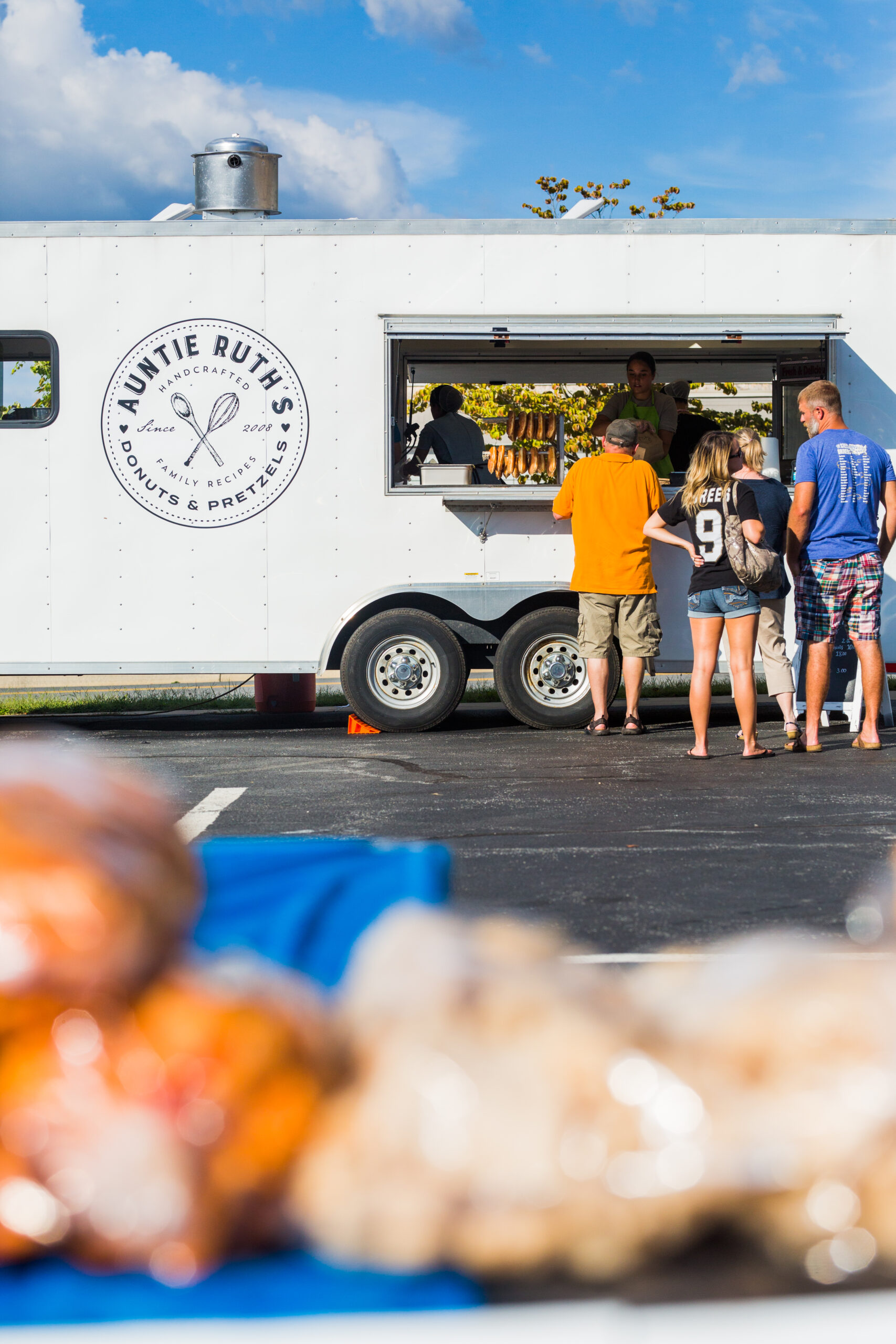
Revitalizing Appalachia’s Downtowns
Downtowns are often the heart of the community—they are home to many of the Region’s small businesses and entrepreneurs, and serve as focal points for residents and visitors by providing a robust mix of shopping, dining, entertainment, and community services.
Appalachian downtowns are rich in history and heritage, yet many lack the resources needed to attract private investment and grow the local economy.
ARC supports downtown revitalization projects that identify a vision and implement strategies for attracting new economic development. Investments include upgrading pedestrian and bicycle access, façade improvement programs, and comprehensive planning efforts promoting business growth and tourism.
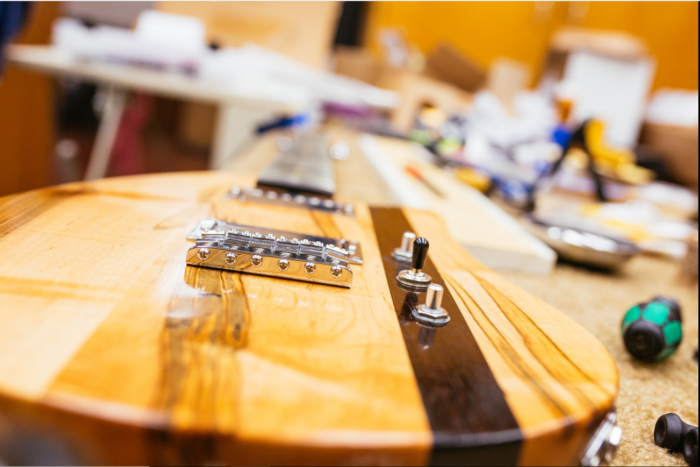
Promoting Appalachia’s Cultural Heritage
Cultural tourism is a growing economic engine and brings visitors into small towns to shop, eat, play, and sleep.
Visitors, however, are only one part of the tourism ecosystem. Thriving tourism ecosystems must include entrepreneurs, marketers, local businesses, and a flexible workforce, all creating opportunities in hospitality, outdoor recreation, and related local business.
ARC investments help Appalachian communities plan around their art, music, cuisine, history and cultural heritage, and develop tourism ecosystems that help create job opportunities in some of the Region’s most isolated and distressed communities.
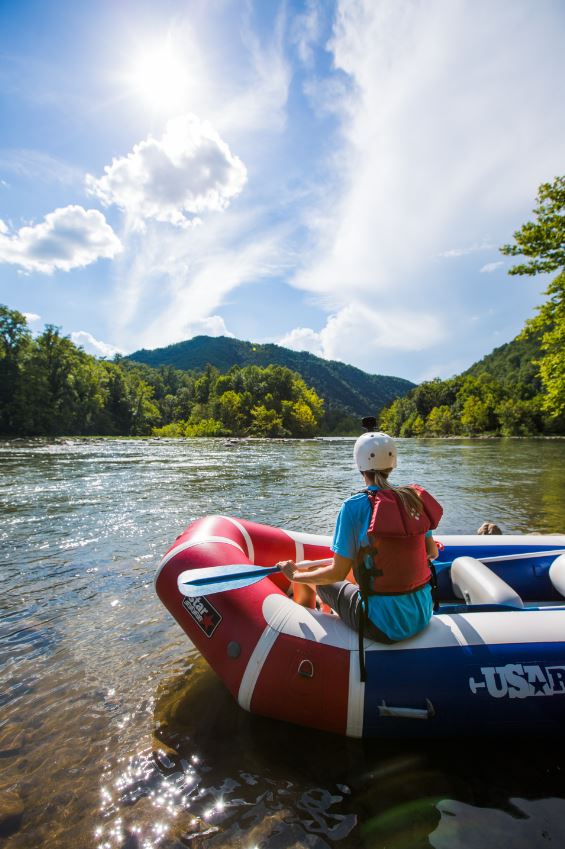
Increasing Outdoor Recreation Opportunities
Appalachia’s forests, parks, water, and mountains anchor the Region’s outdoor recreation sector. Offering biking, hiking, off-roading, paddling, and wildlife viewing in these outdoor spaces attracts visitors to the Region and creates job opportunities.
ARC investments not only help develop outdoor experiences, but also connect them to surrounding rural communities. This helps guide visitors into small towns, which boosts local tourism, increases tax revenues and expands existing business and new start-up opportunities.
Trail Systems: Guiding Communities to Opportunities
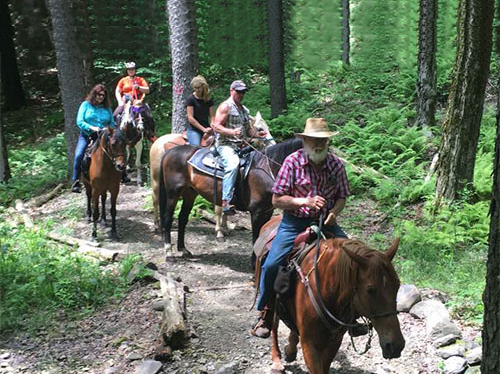
Related Content
Preserving and promoting appalachia’s nature and culture.
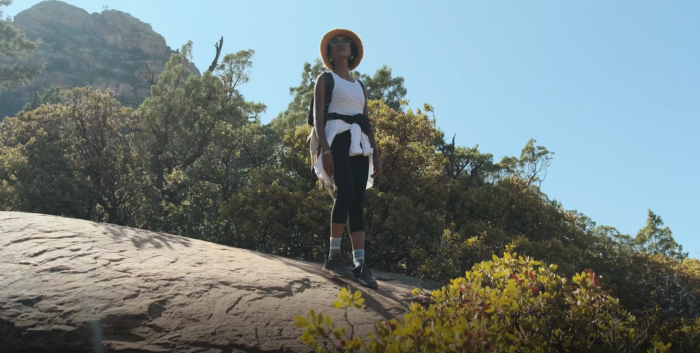
Appalachia’s Outdoors: A Gateway to Growth
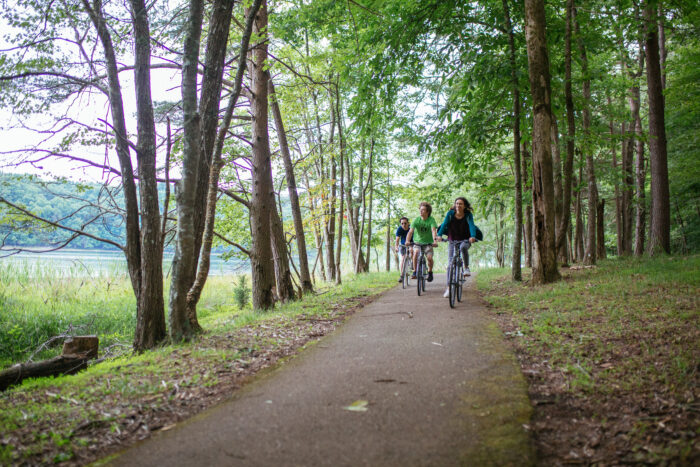
Extending Our Welcome: Trends and Strategies for Tourism in Appalachia
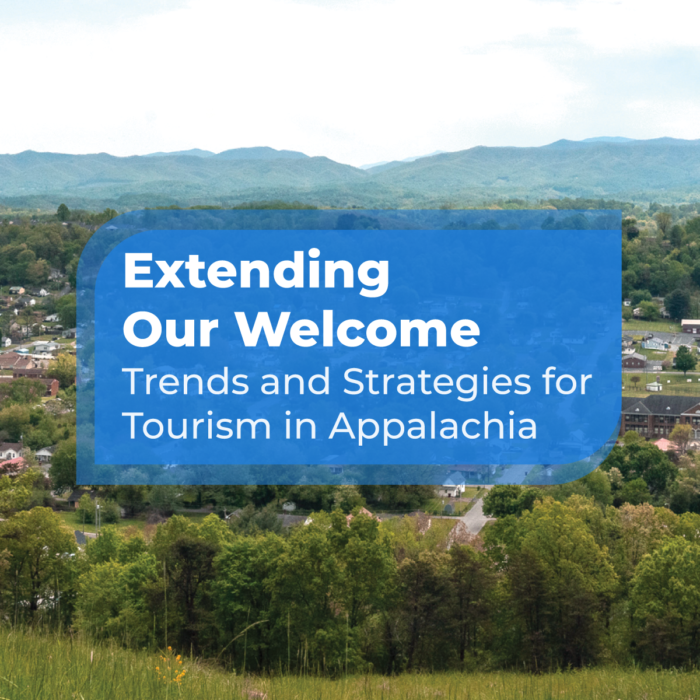
Advisory Council on Historic Preservation
Each year, millions of travelers visit America’s historic places. The National Trust for Historic Preservation defines heritage tourism as “traveling to experience the places, artifacts, and activities that authentically represent the stories and people of the past and present.” A high percentage of domestic and international travelers participate in cultural and/or heritage activities while traveling, and those that do stay longer, spend more, and travel more often. Heritage tourism creates jobs and business opportunities, helps protect resources, and often improves the quality of life for local residents.
The ACHP has encouraged national travel and tourism policies that promote the international marketing of America’s historic sites as tourism destinations. The ACHP also engages in ongoing efforts to build a more inclusive preservation program, reaching out to diverse communities and groups and engaging them in dialogue about what parts of our national legacy should be more fully recognized, preserved, and shared.
The ACHP developed Preserve America , a national initiative to encourage and support community efforts for the preservation and enjoyment of America’s cultural and natural heritage. In partnership with other federal agencies, the initiative has encouraged the use of historic assets for economic development and community revitalization, as well as enabling people to experience and appreciate local historic resources through heritage tourism and education programs. These goals have been advanced by an Executive Order directing federal agencies to support such efforts, a community designation program, and a recognition program for outstanding stewardship of historic resources by volunteers.
From 2004-2016, over 900 Preserve America Communities were designated in all 50 states, the District of Columbia, and two territories, as well as nearly 60 Preserve America Stewards . Many Preserve America Communities are featured in “Discover Our Shared Heritage” National Register on-line travel itineraries . From 2006 through 2010, the National Park Service (in partnership with the ACHP) awarded more than $21 million in Preserve America Grants to support sustainable historic resource management strategies, with a focus on heritage tourism.
These links are being provided as a convenience and for informational purposes only; if they are not ACHP links, they do not constitute an endorsement or an approval by the ACHP of any of the products, services or opinions of the corporation or organization or individual. The ACHP bears no responsibility for the accuracy, legality, or content of the external site or for that of subsequent links. Please contact the external site for answers to questions regarding its content, including its privacy policies.
Related resources.

- Departments
- Economic Development
- Heritage Tourism
- Heritage Preservation Grant
- Historic Preservation Resources

The Heritage Tourism Division provides leadership and management for the City's heritage tourism programs aimed to attract tourists and convention delegates and to derive economic, business, and community benefits associated with honoring and preserving Austin as a place of personal heritage. Sign up for the Economic Development Department newsletter to stay informed.
The Heritage Tourism Division promotes rich histories of people and places in Austin that also supports the economic vitality of the hospitality industry, as well as the surrounding commercial business districts, small/local business, creative sectors, and current tourism assets in the Austin Region.
Facilitate the development and execution of a forthcoming Citywide Cultural and Heritage Tourism Plan, informed through a public input process; administer Hotel Occupancy Tax funds allocated to the Historical Preservation Fund, which is the primary funding source for the Heritage Grant program, to support thriving establishments host long-term and short-term visitors; and help build capacity of tourism sites.
What is Heritage Tourism?
The National Trust for Historic Preservation defines heritage tourists as those who travel to experience the places, artifacts and activities that authentically represent the stories and people of the past and present.
Economic Benefits of Tourism
Tourism creates jobs, new business opportunities, and strengthens local economies. It protects heritage, natural and cultural resources, which improve the quality of life for residents and travelers who participate in the services and attractions.
RECENT NEWS
Take advantage of the search to browse through the World Heritage Centre information.
Securing funding and investment
- Toolkit About the Sustainable Tourism Toolkit How to use this guide? Our Objective Resource Library
- Guides Strategic foundations Guide 1: Understanding Guide 2: Strategy Guide 3: Governance Guide 4: Engagement Core Delivery Guide 5: Communication Guide 6: Infrastructure Guide 7: Value Guide 8: Behaviour Guide 9: Investment Guide 10: Monitoring
- Case Studies Guide 1: Historic Town of Vigan Guide 2: Angkor Guide 2: Ichkeul National Park Guide 3: Melaka and George Town Guide 4: Avebury Guide 4: Old and New Towns of Edinburgh Guide 4: Great Barrier Reef Guide 4: Røros mining town and the circumference Guide 5: Røros Mining Town and the Circumference Guide 6: Cornwall and West Devon Mining Landscape (United Kingdom) Guide 7: Røros Mining Town and the Circumference Guide 8: Wadi Al-Hitan Guide 9: Land of Frankincense
What this guide 1 will tell you
This guide 9 will tell you some ways that you can secure investment in order to help make the aspirations developed from these guides for your site and the destination as a whole a reality.
Steps to success
Why this matters.
Sustainability is always to an extent about financial sustainability . Having enough income to sustain the heritage values of the site for future generations is a critical issue. Money ultimately determines whether all of the possibilities presented in the previous Guides are actually feasible.
Resources are always finite. Very few sites have adequate investment to do everything they need/want to do, so all sites, to a greater or lesser extent, need to think about attracting additional/new funding and investment to make the progressive changes necessary for a more sustainable destination.
The four ways to finance World Heritage – a beginner’s guide
There are basically only four ways to finance and sustain your heritage site:
1) Taxation
The conventional model is based on the state, regional, or local government imposing taxation directly (through visitor taxes imposed at point of entry) or indirectly (through taxing tourism businesses) on the travelling public , which is then returned to the site as subsidy for conservation works. For many people engaged in the conservation of World Heritage sites, this will be the preferred model.
2) Raising commercial revenue on site
This is another common model in which site authorities raise revenue locally from increased or higher value ticket sales, retail, food and drink, accommodation, transport and experiences, and re-invest this into the conservation of the site . For many site management organisations, this is often the solution, but it carries all the potential negative issues that can result from greater footfall or increased economic exploitation of the site. Raising commercial revenue on site is important, but it will cover only a fraction of the tourism spending in your destination, the majority of which is not spent at the site ( See Guide 7 , Adding value through products, experiences and services).
3) Raising commercial revenue beyond the site
Some sites can sell products , services, experiences, or intellectual property beyond the destination . A growing minority of World Heritage communities have developed business models that transcend the local resident and tourism demand for products and have developed revenue streams for products, services, experiences, or intellectual property from beyond the destination ( See Guide 7 , Adding value through products, experiences and services).
4) Fundraising or working with others to secure investment
A growing number of sites are developing new fundraising models . You need to be clear what your revenue-generating strategy is, as it will inform how you develop your destination. That will be addressed in this Guide.
Be clear how much funding/investment is needed to maintain and bring about the desired progressive changes to the site and destination
- Is there a funding shortfall to preserve, interpret, and enhance the values of the site?
- How much money do you need?
A sustainable tourism strategy (as set out in Guide 1 , Understanding tourism at your destination) should identify the actions that need to be undertaken. From this, it is relatively simple to put a cost on the different actions and work out a timescale, which in turn, will enable an annual budget to be calculated.
Being clear about how much funding/investment you need and what you need it for is critical to the way that you attract it. The first questions any serious investor or donor are going to ask are:
- 'What do you need money for?’
- 'How much money do you need?’
- 'What benefit will I get from giving you money, and how will doing this help me achieve my objectives?’
- 'Why hasn't the government paid for this?'
You need to anticipate potential questions and provide clear answers .
Be clear what you need funding/investment for
Make a list of actions and/or activities that need to take place and an estimate of their costs . Then, identify those actions/activities that have no current funder . Being clear about the need for funding is one of the most important elements of fundraising. Some areas will attract investment and funding more easily than others, but at this stage, just be clear about what you need money for and why.
Identify the likely outcomes from those actions and activities. A simple action might have several different outcomes. For example , restoring a building or a habitat might be an end in itself, but it may also be:
- A means to alleviate poverty in the host community by offering craftsmen or women work
- Become an educational opportunity
- Give visitors a chance to engage in volunteering alongside a professional conservation worker
- Become an activity to share with schools and colleges
- Even become a visitor attraction where people can see the values of the site in action.
Think about the different potential outcomes of any given activity , starting with what you value as an outcome, and then working towards what other people might value.
Identify funders and investors who might be interested in similar outcomes
Some of the following sources should be considered for funding (and others specific to your site!):
1) Governments and statutory bodies
In many sites there will be a relatively sustainable funding situation with the State Party or relevant bodies taking full responsibility for the costs of conserving, interpreting, and enhancing the site and the wider destination. Sadly, this will not always provide sufficient funding for the implementation of the strategy, so other sources of funding/investment may be necessary. World Heritage sites are global entities, so do not confine your analysis to local or national boundaries . Sometimes help is available through transnational funding, such as the EU, World Bank, or other State Parties with a particular interest in your kind of site or activities. For example , much of the funding for the Valley of the Kings in Egypt has come from Japan, so think more broadly about which governments and government agencies might be able to help.
2) Third sector charities, trusts, and foundations
In many societies around the world there are philanthropic trusts, charities, and organizations that have funds to invest in projects that meet their objectives. Having a basic understanding of these is important, as it may give you opportunities for investment. Again, think globally because many fundraising mechanisms are now global. Identify possible third sector donors and investors and think about what outcomes they will require for their investment – read their websites and funding guidance.
3) Corporate sponsorship
As a World Heritage site you are of significance to the whole world , and many responsible and philanthropic companies will value association with your site. Some businesses may wish to secure the benefits of public relations (PR) of being seen as investors in the preservation of the site or be involved in a specific project. However, be cautious about donors’ motivations and set clear ground rules and expectations about what is and is not appropriate. Start to make a list of companies with a link to the site, or which might be approached for other reasons to secure investment.
4) High net-worth individuals
Many people who have had the good fortune to become affluent are looking for ways to leave a lasting legacy, and there is no greater lasting legacy than to help preserve a World Heritage site for future generations . For this to happen, sites need to be able to present their needs, their projects, and the chance to invest in a structured manner. Think about where these individuals are, and how you can get their attention with a well-thought out pitch that will appeal to their philanthropy. When selecting individuals it is particularly important to be aware of their personal interests and values, and to craft individual-specific pitches.
5) Residents
Sometimes a great source of funding and investment lies right within the site – in the form of the local communities. Having a local community membership/donor scheme that encourages the involvement of local people in the preservation of the site can be a powerful tool. It becomes about more than the money . Sometimes people who have left the local community to go and work elsewhere are affluent and looking for ways to return benefit to the host community or the heritage of the site/destination. This can be made possible with new technologies and ideas like payroll giving or requests for donations for special initiatives. Think about how such a scheme might work and the ways that it could become a reality. For instance , would people enter a lottery each week in aid of the site? Is that appropriate to your society? If not, think of other ways to encourage them to contribute willingly.
6) Tourism organizations and businesses
The investment required will often be commercial investment in the tourism infrastructure rather than philanthropic contributions for conservation. However, this investment is also critical – remember, a crucial part of the discussion concerns what types of development and infrastructure are appropriate for the site and its values.
As we saw in Guide 6 , Managing the development of tourism infrastructure, it is essential to set the limits and constraints on growth so developers and businesses understand what is and is not appropriate at a World Heritage site. In some states, there are legal mechanisms to return a share of the gain from new developments to conservation and local socio-economic development initiatives. Tourism businesses are often looking to establish schemes that let them achieve social, cultural, or environmental outcomes as a means to give something back, or raise their profile and perception they are a responsible business with good ethics.
There is a temptation to overestimate tourism businesses as an easy source of funding. In reality, many tourism businesses are small and only marginally profitable. Think about how you can transform tourism businesses into fundraisers , donors, or champions of the site. Think about how you can reach out to the tourism businesses and encourage them to develop more sustainable infrastructure or raise funds for conservation. Many businesses are quite willing to do this because it makes them look good to consumers, and other businesses will quickly follow suit when they see that it works .
7) Visitors
A growing number of destinations around the world are developing systems to encourage direct financial contributions from visitors to sustain the heritage at the heart of the destination, or for local socio-economic development. In some societies and cultures, the preference is for a mandatory tax imposed on visitors at the entry point, on the ticket price, or on beds in the accommodation sector. In other cultures, the preference is for voluntary contributions from visitors through communicating the site's needs and making it easy to donate during the holiday experience.
8) Citizens of the world
The rise of internet-based crowdsourcing models means that sites can, and should, reach out to an interested and sympathetic audience around the world. You can establish a relationship with them that makes them participants in the life of the site, as well as potential donors for social initiatives. The platforms already exist to do this , but very few sites have developed suitable projects and projected them into the world for donations.
Match funders/investors who might be persuaded to fund/invest in particular outcomes or activities
Keep it simple – develop a table with three columns . The first column should list the most important actions/activities for the site/destination. The second column should list the potential outcomes of investing in those actions/activities. Finally, the third column should list the potential sources of investment/funding, and the particular focus that each funder would require before investing.
Decide on a simple fundraising/investment strategy targeted at your most likely sources of appropriate investment
No destination has the time and resources to pursue all possible avenues of funding/investment simultaneously, so make strategic choices about how to spend your time and effort . In some cases, some governments may have an enlightened approach to sustaining their heritage, and recognize its value. Your efforts here might best be devoted to working with those government entities and agencies to explain/persuade the need for investment, and how it can deliver on government objectives.
If you are starting with limited or no resources , then you need to look at a simple mechanism to grow income and capacity (like outsourcing fundraising to tourism businesses) and build towards more complex and resource intensive models over time.
Develop your pitch to funders/investors
Develop projects/ideas that deliver your needs and your funder’s/investor’s objectives . Some well-resourced sites may publish a prospectus setting out their vision for the site, and the different ways that funders/investors can achieve different objectives. If resources are more modest, then write a simple summary of each project and bullet point why someone might want to invest in it, using the insights gained from your homework on prospective funders ( see above ‘Identify funders and investors who might be interested in similar outcomes’).
Every potential donor has a right to a clear explanation of what you need money for, how you will spend their money, and what it will achieve in the long or short term. Sometimes it helps to think of your different avenues of funding as different people, each with a particular character – do a little character sketch about their interests/concerns . Write out a mini-script tailored to each particular donor to help you simulate how you might talk to that person about potentially helping you.
Funding/investment is often competitive, so you must learn to communicate value
Major funders and investors will look for professionalism and the capacity and systems to handle money in a responsible, accountable, and professional manner. This means that your organizational structure is critical . Investors will be interested in:
- How their money will be handled
- The administrative costs of handling their money
- Your track record at handling monies and delivering outcomes through spending it
In some cultures, donors and investors prefer the fundraising body to be a registered charity or not-for-profit organization with published accounts and the regulation and transparency that comes with such systems.
Bundle outcomes together to attract funders/investors to new activities
Different funders and investors will have different concerns, but sometimes bundling together outcomes in more holistic solutions helps them to justify their investment. Some of the most effective fundraising programmes in the world creatively package outcomes from projects so they can appeal to new/different funders. For example , an education funder may be able to invest in conservation works if it is developed to include schools and colleges teaching conservation skills. The outcome desired may be conservation work, but by widening the project to be educational means, new or non-conservation-focused funders can also invest .
By looking at the needs and the funding opportunities in a holistic way, many organizations have found ways to attract investment and achieve their own – and the donor's – objectives, even when these seem quite different at first glance. Pragmatism is the watchword of fundraising – do what works .
Establish mechanisms for fundraising from the tourism sector and particularly from visitors
Here are some options for establishing fundraising mechanisms ( Note that the different mechanisms require more capacity and expertise as you descend the list):
1) Donation boxes and envelopes
One of the simplest forms of fundraising. You can ask businesses to position donation boxes or envelopes in appropriate places , and periodically hand in the funds collected to a central source.
2) Ticket levy schemes
Another relatively simple mechanism, you can ask attractions and transport providers to add a payback levy to their ticket price for the conservation of the site, and collect that levy before handing it in periodically to a central source. Businesses can, and should, tell visitors why they are doing this, and how it sustains the site.
3) Payback products
Businesses can add a payback premium to some of their products and publicise to customers that, every time that product is purchased, a set donation goes towards the conservation of the site. Again, businesses periodically hand the funds into a central source.
4) Charity auctions
Some conservation charities raise significant amounts of money through auctions of donated products, goods, and experiences .
5) Visitor gifting
Accommodation businesses (or those offering other services and products) can operate an 'opt-out' or an 'opt-in' system, asking visitors to donate an additional amount on top of the usual cost of the service to go towards conservation or community development. This is sometimes called 'travelers philanthropy’ and has operated in some destinations for more than two decades, raising significant amounts of money.
6) Membership or friends schemes
Visitors, businesses, or residents are asked to pay a membership fee to become a patron of the site. In return, they may be given some benefits, such as chances to visit restoration works, attend opening exhibitions at the site, etc. Sometimes local people are given special access to the site through such schemes, and visitors can maintain their support for the site long after their visit has ended.
7) Crowdsourcing
There are now numerous crowdsourcing websites that, for free or for a small charge, enable projects to be presented to potential donors around the world. The key to effective crowdsourcing is developing and presenting the actions/activities required at the site level in an attractive manner , appealing to donors’ philanthropy. On some sites, perks are added to contributions over a certain amount. The appeal of these sites is often the social nature of the help being provided, with people donating as a group, as friends from a business, a football team, church group, etc. They are a great way to attract large numbers of small donations, which all add up!
8) Payroll giving
Residents, visitors, or citizens of the world can donate a percentage of their weekly, monthly, or annual income to the site through a direct payment mechanism into a central source, which then funds conservation works. Because this is automated, it can be an effective and enduring way to raise funds, but encouraging sign up requires resources.
9) Legacy gifting
Residents, visitors, or citizens of the world are encouraged and assisted to write into their will an endowment to the conservation of the site. This is a way for anyone to leave a powerful and enduring legacy after a person's life. It is a deeply meaningful source of income that should be illustrated somewhere on the site, such as, for instance, a plaque listing the donors' names. However, be mindful that due to the nature of the donations, it can take time to deliver revenue.
10) Corporate sponsorship
Businesses are often keen to associate with some of the world's most important historic sites, regardless of whether they are locally based or not. The value is in the association with the site and being seen doing something good as a business, which is respected by both their customers and their staff. Not all businesses will be appropriate for all sites – selection needs to be conscientious – but opportunities do exist for great conservation work to be financed through this route.
11) Special events or experiences.
Some heritage sites have found other innovative ways to raise funds for conservation, such as offering access to filmmakers for use as a movie set, holding sporting events, or musical concerts . Clearly the first priority must be protecting the heritage and the intangible values of the site, as well as the quality of life of residents. Yet, often there is great scope for such activities which may be very lucrative in raising much needed funding for conservation – if the right experts are consulted in the process.

With more advanced fundraising techniques you need to build capacity and fundraise in an increasingly professional manner
Grow your skills and capacity over time and aim to become professional in your fundraising. Fundraising is often an afterthought for some destinations, delivering tokenistic amounts of revenue. However, in the most dynamic destinations, fundraising is effectively a professional activity that resources itself, or turns seed capital invested by core stakeholders into a long-term revenue stream. Any fundraising strategy for a significantly sized site should set out the steps required to move from the starting point to a more professional approach with the capacity and skills to be self-sustaining.
The goal should be an ongoing donation-giving relationship , not a one-time donation. The best kind of donor is one that keeps on giving, preferably through a mechanism that is automated so the transaction costs stay low. This ties in nicely with the marketing goal of a destination , which should also be about lasting relationships to encourage future visits. Great destinations keep talking to their visitors, engaging them in activities and initiatives.
It’s not just about money
If your site has very limited resources, it may be more effective initially to look for help from some of your residents, visitors, or sympathetic citizens of the world. Clay Shirky, an American writer, has written of there being a growing 'cognitive surplus' in the developed world – affluent people with free time who are often willing to use their education and professional skills to help good causes . You may already have an amazing web designer visiting your destination each year who could create a website for you at little or no cost as a philanthropic gesture, but you need to explain and communicate the need before anyone will recognise it and respond. Give people an opportunity to volunteer.
Will tourists really donate?
Yes, if the need is legitimate, and if it is simple, trustworthy, and quick . There is a growing body of evidence around the world that visitors do donate if the destination sets up appropriate structures that make it simple, not time consuming, and trustworthy by having a legal structure and clear philanthropic aims (charities or not-profit organizations work best because people do not like giving money to governments that also collect taxes). Schemes also need to be clear about the difference they will make , and why other sources like the government are not already paying for this action/activity.
Technology has limitations, simple is often better. Approximately one-half to two-thirds of people on the planet do not have smart phones or internet access from a computer, and while this percentage is rapidly decreasing, you still need to be wary of over-reliance on technology-based solutions . Many sites will have poor mobile phone reception, and many people will still prefer to give a cash donation rather than complete an online financial form for a financial transaction. Look at the full range of fundraising solutions and work out the approach, or combination of approaches, that will yield the best return on the investment of time and money.
Online fundraising should not be confined to the destination
Fundraise where people spend their money , including at their computers in their homes. More than half of holidays are now booked online in some technologically advanced, affluent countries. As this may be the biggest transaction of a person’s holiday, asking for donations should be embedded into the online learning and booking systems . This means it must be part of the websites that visitors use to learn about the site, find accommodation and transport, and through which they book their holidays.
Embed fundraising in a strategic approach
Fundraising should be embedded in everything the destination does – a key part of the strategy, a protecting force for the heritage, an enabler for the local community, and part of the ongoing relationship that the destination has with its visitors. More and more, people value deeper and lasting relationships with the important places they visit , and in this context, making donations is seen as part of their commitment, something positive, and not a dull or resented obligation. There is also a growing body of evidence that says consumers expect destinations and tourism businesses to play a role in sustaining natural and cultural heritage.
Guide 9 PDF version
English Russian

Arts and Culture Grants
Please note the 2024 application period for this grant has closed.
Arts and Culture Grants will support the promotion and management of artistic and cultural forms of expression as tourism assets. These include art shows, concerts, festivals and events, as well as museums, historic sites, cultural institutes, and creative districts. Arts and Culture Grants aim to boost the local economy by attracting overnight visitors who are interested in experiencing the artistic and cultural offerings of a people and a place while mitigating any negative impacts on residents, social services, and public infrastructure.
Tourism stakeholders may request up to $30,000 in grant funding for a variety of projects, including but not limited to the following categories:
Festivals and Events This grant program will aid the planning and management of new (less than three years old) arts and cultural-based festivals and events that drive overnight stays and visitor spending for destination communities.
Public Art Installations Funding for public art projects, murals, sculptures, and other artistic displays that enhance the visual appeal of public spaces and foster a sense of place.
Marketing and Promotion Grants may be allocated to marketing campaigns to promote a destination as a hotspot for arts and culture, attracting visitors interested in immersive cultural experiences.
Cultural Heritage Tourism
- Diversifying, expanding, or enhancing cultural heritage programs and events
- Cultivating niche markets and networks
- Strategies to improve the management of cultural heritage tourism, such as identifying and evaluating cultural heritage resources, guide training, restoration/interpretation projects, etc.
- Economic impact studies of cultural heritage tourism on the local economy
- Strategies to improve the promotion of cultural heritage tourism with maps, itineraries, digital storytelling, FAM tours, etc.
Local governments, tribes, chambers of commerce, destination organizations, performing art centers, visual arts organizations, and other nonprofit organizations that support travel and tourism are eligible to apply.
Applicants are strongly encouraged to match a portion of their grant request with cash or in-kind contributions. Grant funds from SWT should not pay for staff salaries, debt, or interest payments associated with eligible projects. Applicants are also strongly encouraged to collaborate with local destination marketing organizations and industry partners on eligible projects.
2024 Application Timeline
March 15 – April 15: Application period | View the recorded info session
April 15 – May 15: A review committee of industry experts will evaluate the leading applications.
May 15: Award recipients will be notified by email.
June 15: Estimated date grant funds will be made available. Grantees have one year to expend the funds.
Stipulations for Working with Contractors
Tourism Stakeholders should express an intention to seek contract work from a third party without naming a vendor. When describing the work, applicants should specify deliverables and the desired qualifications of vendors.
Applicants must also abide by the following stipulations as outlined by the Washington State Department of Commerce:
If a micro-purchase (up to $10,000)
- The price is reasonable based on research, experience, purchase history, or other information and must be documented.
- For professional services, Commerce recommends creating a contract to ensure deliverables will not exceed $10,000 as a best practice.
If a small purchase ($10,001 – $30,000)
- Quotes were obtained from at least three sources.
- The purchase limit can reach $40,000 if using a certified small or veteran-owned business as outlined in RCW 39.26.010(22) .
For purchases above $30,000 (or $40,000 if using a certified small or veteran-owned business), applicants will need to follow the federal procurement process outlined in 2 CFR 200 procurement .
Applicants awarded grant funds must submit all contracts/contractors involved with each project to SWT for review and approval. Contractors must be billed on a reimbursement basis after services are rendered. If applicable, some eligible expenses can only be covered at OFM reimbursement rates .
Reporting Requirements
Grantees must submit two reports (an interim and a final evaluation) and comply with quarterly check-in meetings for the duration of the grant project. If awardees fail to submit an evaluation, their consideration for future grants may be adversely affected.
The project evaluation should include:
- A final budget
- Proof of spending
- Vendor tax forms (W-9 and Form 1099)
- Photos and testimonials
- A written account of how grant funds were used and their impact on travel and tourism.
Be sure to view the FAQ for this grant program as well as the application portal FAQ . For additional questions, contact Tamara Rice at [email protected] .
These funds are made possible through a federal grant from the Economic Development Administration, awarded to State of Washington Tourism by the Washington State Department of Commerce for tourism industry pandemic recovery.
The 2024 call for applications to UNESCO’s International Fund for Cultural Diversity is now open!

UNESCO is launching the fifteenth call for applications to the International Fund for Cultural Diversity (IFCD ) . Through an open and competitive process, projects will be selected based on their ability to generate concrete and lasting results towards the development of the creative sectors in developing countries that are Parties to the 2005 Convention.
Project proposals should contribute to:
The implementation and/or elaboration of policies and measures that have a direct, structural impact on the creation, production, distribution and access to a diversity of cultural goods and services ;
The strengthening of capacities in public institutions and civil society organizations to support viable local and regional cultural industries and markets .
Public institutions and non-governmental organizations (NGOs) from eligible countries are invited to submit their proposals, as well as international NGOs registered in countries that are Parties to the 2005 Convention.
Since 2010, the IFCD has invested more than US$ 11.5 million through 152 projects in 71 developing countries. These diverse initiatives have contributed to the development and implementation of cultural policies, the strengthening of professional training and cultural entrepreneurship, supported access to new markets, and the participation and inclusion of vulnerable groups in cultural life.
Through the IFCD's 2024 call for applications, UNESCO renews its commitment to strengthening the cultural and creative industries in developing countries, as fundamental pillars for protecting and promoting cultural diversity, encouraging creativity and innovation, and for building a more sustainable world.
The IFCD is a key instrument of international cooperation and assistance for the UNESCO Convention on the Protection and Promotion of the Diversity of Cultural Expressions (2005) .
The fifteenth call for applications opens on 15 April 2024 and closes on 14 June 2024, noon Paris time .
For any inquiries, please contact the Secretariat of the 2005 Convention ([email protected]).
Learn more about IFCD funded projects .
APPLY FOR FUNDING
Related items
- UNESCO Office in Montevideo and Regional Bureau for Science
Other recent news

Select your language
Official eu languages.
- slovenščina
Culture and Creativity
Funding opportunities for cultural heritage

Several EU funding programmes support cultural heritage under the current Multiannual Financial Framework, the EU’s multiannual budget covering the period between 2021 and 2027.
Anyone looking to apply for funding from these programmes can use the CulturEU funding guide. This user-friendly tool presents available funding opportunities for the cultural and creative sectors in EU programmes 2021-2027.
The CulturEU funding guide is available as an interactive online webtool and as a printable guidebook . It covers opportunities linked to around 20 EU funding programmes that can support projects with a cultural and creative dimension.
Creative Europe
The Creative Europe programme is the main source of EU funding for the culture and creative sectors.
The Erasmus+ programme focuses on mobility projects and virtual exchanges, on organisational cooperation and partnerships as well as support to policy cooperation at European Union level.
The programme is open to individuals and organisations from EU Member States, third countries associated to the programme and other partner countries.
During the European Year of Cultural Heritage (2018), Erasmus+ awarded close to €92 million to 965 cooperation and mobility projects that focus on cultural heritage.
Highlighted projects
HeritagePRO is an Erasmus+ project on sharing good practices in cultural heritage preservation.
You can explore this and more Erasmus+ projects on cultural heritage on the Erasmus+ project results platform , or download the publication “ Erasmus+: Enriching our cultural heritage ”.
Horizon Europe
Horizon Europe is the continuation of Horizon 2020 as the EU’s main research and innovation programme with a budget of €95.5 billion.
Download a factsheet with an overview of the budget
The programme is built on 3 pillars:
- Excellent Science
- Global Challenges and European Industrial Competitiveness
- Innovative Europe
The promotion of cultural heritage falls under Cluster 2 of pillar 2 “Culture, Creativity and Inclusive Society”. Research and Innovation activities in Cluster 2, among other objectives, aim to “improve protection, enhancement, conservation and more efficient restoration of European cultural heritage”.
Citizens, Equality, Rights and Values (CERV)
The CERV Programme contributes to citizens' understanding of the European Union, its history and diversity. It also encourages people to take part in EU level democratic processes.
An important part of the programme focuses on remembrance: keeping the memories of the past alive so that we are able to learn from the past and build on this experience for a better future. Cultural heritage plays and important role in this effort. One example of funded projects under CERV are Town-twinning projects. These encompass activities related to cultural heritage, together with the promotion of civic participation and engagement at the EU level.
Cohesion Fund and European Regional Development Fund
Cohesion Fund, European Regional Development Fund – and within this Interreg Europe – are the main funding sources for EU regional development.
Local and regional authorities in charge of protecting and promoting cultural heritage can benefit from significant support from the European Regional Development Fund.
Within a €226 billion budget for the European Regional Development Fund, included €9 billion for the Interreg programme, around €4.7 billion are allocated to create local jobs at heritage sites and attract visitors to the specific cities and locations.
Interreg Europe are a series of programmes that aim at stimulating cooperation between regions in and outside of the EU. Cultural heritage is among the most popular topics within Interreg Europe.
Thanks for your feedback
We are happy to see that your experience was positive. Don't forget to share the pages you like with your friends and colleagues.
If you need to ask a question, please contact Europe direct .

- Director’s Greeting
- Mission Statement
- Quality Policy
- Our Faculty
- Grants Committee
- Partner Organizations
- Publications
- Employment Opportunities
- Executive Leadership
- Summer Field School
- CERTIFICATE
- OPEN COURSES
- CONTACT/ΕΠΙΚΟΙΝΩΝΙΑ
- 1st Conference
- 2nd Conference
- Organising & Scientific Committee
- Session Abstracts
- Invited Speakers
- Authors Instructions
- Side Events
- Communication
- Προσκεκλημένοι Ομιλητές
- Προσκεκλημένες Ομάδες
- Επικοινωνία
- Round Table
- Invited Initiatives
- 8th Conference
- Newsletters
CALL FOR APPLICATIONS: SMALL GRANTS FOR AFRICAN HERITAGE PROJECTS
- February 23,2023
- By HERITΛGE

The Heritage Management Organization (HERITΛGE) is launching a new call for concept notes for small grants ($5000-$50000) for organizations, groups, and individuals working with heritage in Africa.
The grants are part of our Heritage Management Project – Africa (HerMaP-Africa) which is funded by the Mellon Foundation’s Humanities in Place program. They will fund projects that focus on the protection of and/or promotion of local heritage for socio-economic development in the continent.
“We are looking to untap the potential of heritage in Africa, in order to make a difference for the development of local communities, “ said HERITΛGE Director, Dr. Evangelos Kyriakidis. “Heritage has the ability to empower and we are ready to partner with local organizations around the continent to this end.”
Applicants will have to demonstrate that their project addresses one or more of three criteria:
1) Sustainability – Our focus is on projects that will have a lasting impact, much beyond the duration of the project, for example protecting heritage sites from desertification by creating green belts, preserving/stabilizing/restoring and adaptively reusing a historic building for community needs, researching the public heritage landscape, installing solar panels at heritage sites to generate income or decrease expenditure in the long term, building eco-friendly tourism infrastructure, direct interventions that strengthen social institutions, like traditional methods of mediation, etc.
2) Capacity development and network building – We encourage projects that strengthen local skills and build closer links with peer organizations in the HERITΛGE network. Examples include on-the-job training in preventive conservation (e.g clearing or fencing sites), experience and expertise exchanges with other local NGOs on shared issues such as desertification or erosion of sites, co-operative training on museum exhibition design, etc.
3) Concrete and community impact – We encourage projects with strong, measurable incomes in terms of heritage protection and benefits to local people. Each project should provide clear indicators of the planned impact. These indicators will depend on the type of work carried out but some examples include increased visitation to a heritage site or program, financial benefits to the local community in terms of increased employment opportunities or local businesses created; tourism earnings; money savings by solar panel installation; the size of area protected from desertification, etc.
To apply for these grants please complete the concept note application form you will find here.
About HerMaP-Africa: Made possible by a $5 million grant from the Mellon Foundation ’s Humanities in Place program, it aims to strengthen HERITΛGE ’s Africa programs, fund initiatives that link heritage with socio-economic impact, develop the capacity of local organizations, and help them preserve African heritage and culture.
About The Andrew W. Mellon Foundation: The Andrew W. Mellon Foundation is the largest supporter of the arts and humanities in the United States. Since 1969, the Foundation has been guided by its core belief that the humanities and arts are essential to human understanding. The Foundation believes that the arts and humanities are where we express our complex humanity and that everyone deserves the beauty, transcendence, and freedom that can be found there. Through its grants, it seeks to build just communities enriched by meaning and empowered by critical thinking, where ideas and imagination can thrive. Learn more at mellon.org .
Tags Clouds
Copyright 2015-23. All rights reserved.
- Privacy Policy
Uniarts Helsinki’s objectives for European elections 2024
22.5.2024 News
Art, arts research and arts education play a key role in building up the kind of Europe that is competitive and able to successfully solve challenges that we face in the future. Uniarts Helsinki’s objectives for the elections to the European Parliament in June and for the upcoming EU parliamentary term highlight that it is imperative to acknowledge the role of the arts and culture as the pillars of the success of Europe
1. The role of the arts in building a more sustainable Europe must be recognised
Unstable economy, climate change, ageing population, unemployment and changes in the security environment are examples of challenges that Europe must find solutions for in the coming EU period. We need art as well as research and teaching in the arts to enable and promote a systemic change, which is a requirement for building an ecologically, socially, culturally and financially more sustainable Europe. Unstable economy, climate change, aging population, unemployment and changes in the security environment
Art has the ability to cross language and cultural barriers and deal experientially with the basic questions of being human that unite us all. At the same time, art also has the ability to bring out phenomena that otherwise remain on the margins or unnoticed. Therefore, art plays an essential role in the continuous redefining of the cultural and value-based core of Europeanness, in supporting democracy and crisis resistance, and in reducing segregation and polarization.
The moments of reflection, pausing and awakening that art offers are a resource and a tool that we can rest our scientific, technological and societal development on. Therefore, the European Parliament and Commission must recognise the role of art when introducing innovations and new technologies.
2. Funding for the arts must be brought to a sustainable level for the next EU Framework Programme for Research and Innovation
Fields of social sciences and humanities, including the arts (=SSAH, social sciences, arts and humanities) are central in integrating social, financial, human and cultural perspectives into all research and in the assessment of the impact of research. These fields should be allocated considerably more funding during the validity of the next EU Framework Programme for Research and Innovation for 2028–2034. The arts must also be featured in the content of the future work programmes under the framework programme.
The success of Europe must be guaranteed through high-level competence, education, research and innovation activities. That is why Uniarts Helsinki supports the shared goal of Finnish universities outlined through UNIFI to double the funding of the framework programme to a total of 200 billion euros for 2028-2034 and emphasizes the need to better consider the humanities and art fields in its planning.
3. Public funding for the cultural sector must be safeguarded
The creative sectors offer employment and chances of considerable growth for the EU. According to the Central Organization for Finnish Culture and Arts Associations, Kulta ry, the cultural and other creative sectors grew faster than the EU’s economy on average, and the trade balance recorded a surplus of 8.6 billion euros. The creative sectors also employed over 7.6 million euros people in Europe before Covid – over eight times more than data communications and three times more than automotive industry.
Uniarts Helsinki supports Kulta’s message: We must safeguard the competitive edge of the European culture sector both through funding and by applying up-to-date regulations. In order to operate successfully, the cultural sector requires both public funding and the promotion of private of investments. The EU’s financial instruments are a significant enabler also for the Finnish cultural sector, cultural heritage and cultural tourism.

Hi, what are you looking for?
Alabama Political Reporter
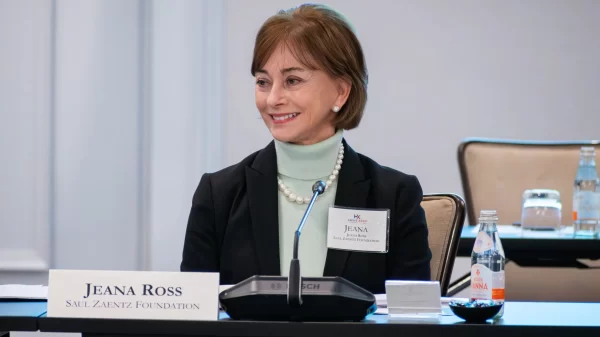
Jeana Ross wins HD27 in decisive GOP victory
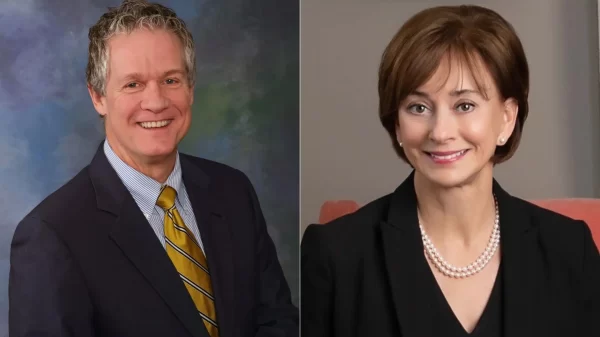
District 27 runoff today: Miller vs. Ross in GOP showdown

Committees approve bills to ensure Biden is on the ballot in November

Daniels reflects on CD2 results, commits to support Democrats

Sen. Katie Britt endorses Dobson in 2nd Congressional District
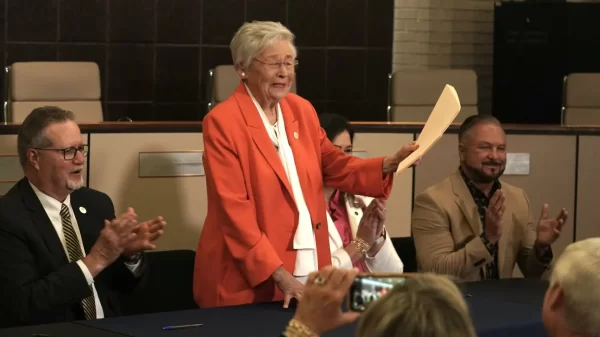
Gov. Ivey finalizes state’s purchase of the Foley Beach Express

Gov. Ivey invites Alabama students to join for her Summer Reading Challenge
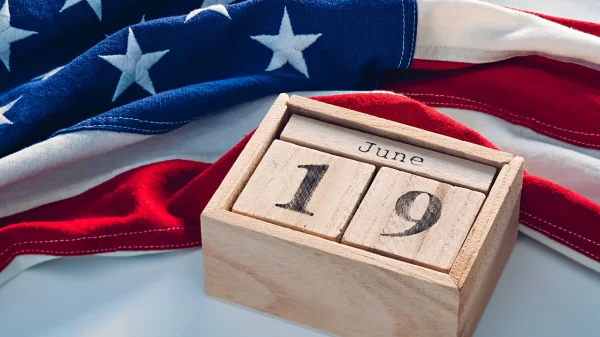
Juneteenth designated as state holiday for fourth year
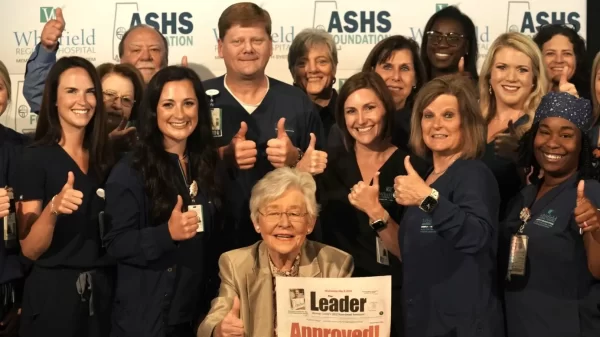
Gov. Ivey signs bill establishing School of Healthcare Sciences

Cover Alabama calls on Gov. Ivey to close healthcare gap
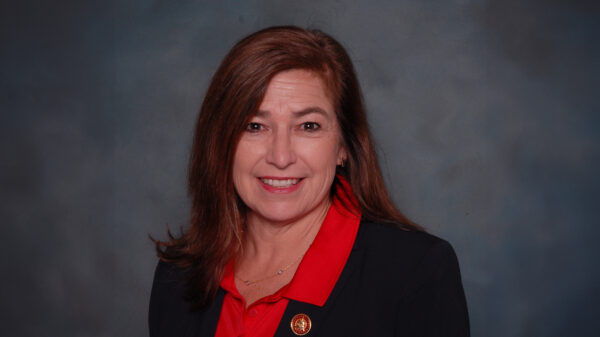
Rep. Fidler announces town hall meetings

Ivey signs “first grade readiness” bill into law
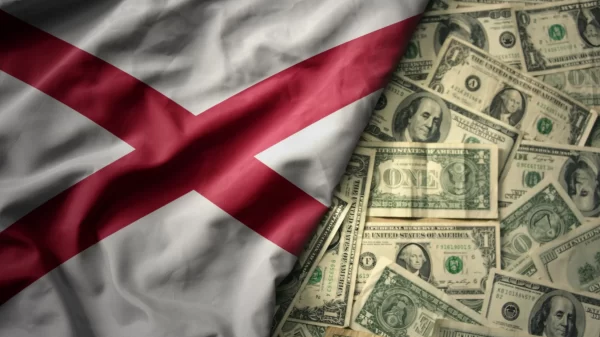
Since 2022, ALFA, PCI donated over $310,000 to senators who killed gambling bill
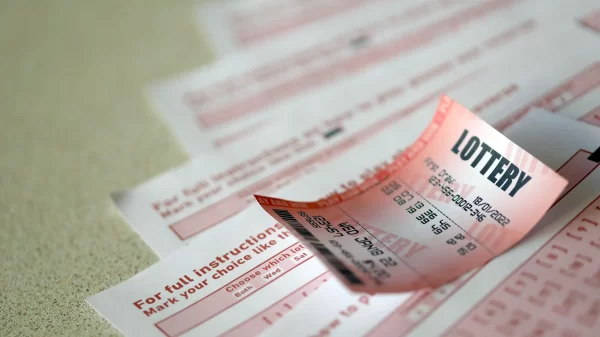
House member: Blame 15 Alabama senators for gambling legislation failing

How ALEC affects Alabama legislation
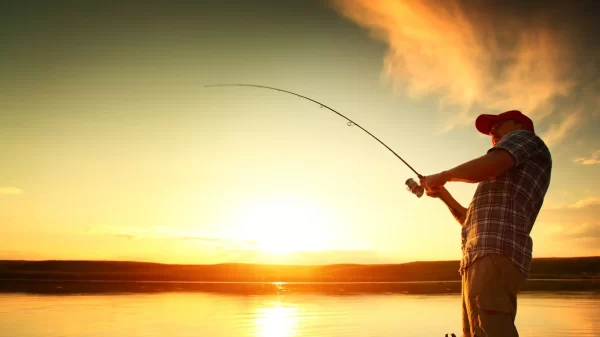
Report outlines roadmap for Black Belt to be leading ecotourism destination

Workers at an electric bus plant in Anniston unionized and won double-digit raises

Department of Labor claims Mar-Jac Poultry of Alabama used oppressive child labor

Alabama’s housing market sustains three consecutive months of positive growth

Inflation down, unemployment up in April: Bureau of Labor Statistics

Trial on gender-affirming care ban likely delayed to October
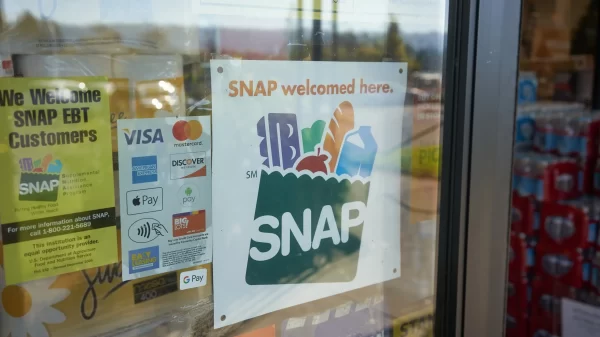
Proposed 2024 Farm Bill would cut SNAP benefits by nearly $30 billion

Biden Administration relieves more student loan debt
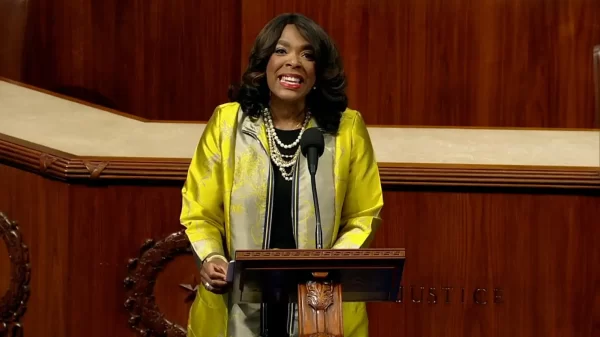
Rep. Sewell lands wins for Alabama in National Defense Authorization Act
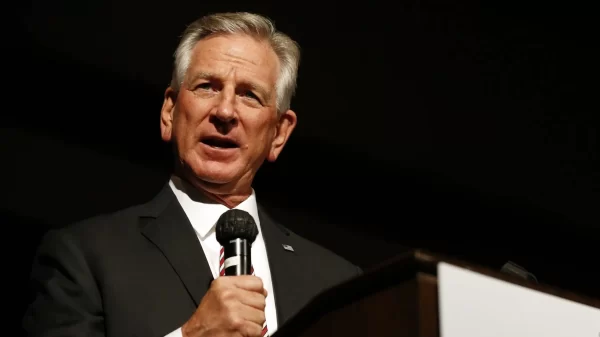
Sen. Tuberville continues attacking Social Security funding model
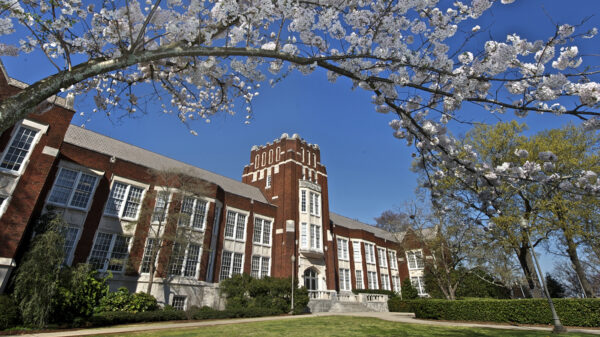
Jacksonville State announces closure of DEI office
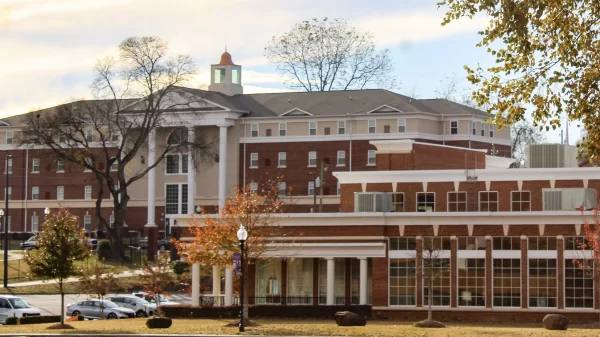
Miles College celebrates 10-year business accreditation reaffirmation
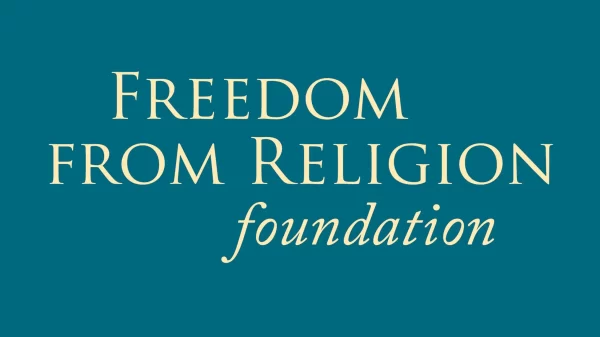
Alabama school district faces controversy over alleged religious assembly

Public/Private partnership netted over $10M for summer learning over the last decade

Louisiana bill to criminalize abortion medications, echoing AG Marshall’s approach
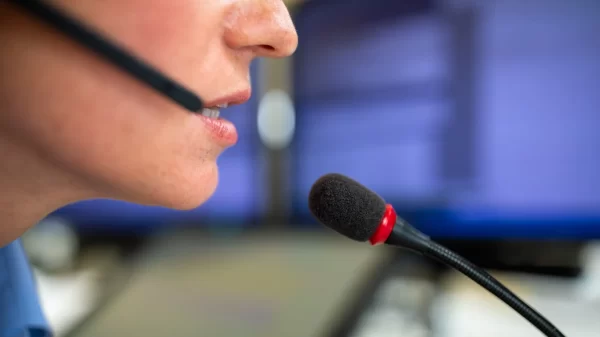
Bill would reauthorize Poison Control Center Network program

Diversicare of Montgomery celebrates National Skilled Nursing Care Week

Montgomery psychiatrist named president of Alabama Medical Association

Alabama doctors unveil “Your Care is at Our Core,” emphasizing personal connections
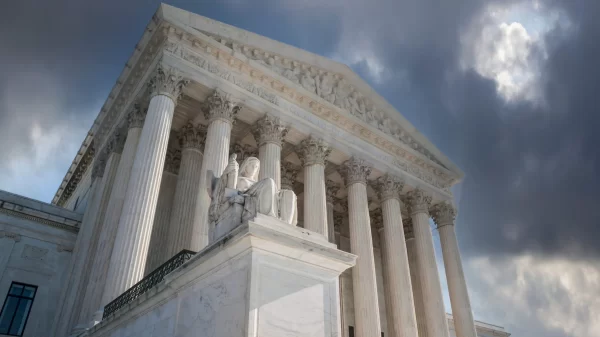
Opinion | Supreme Court’s thin veil of “good faith” in racial gerrymandering case
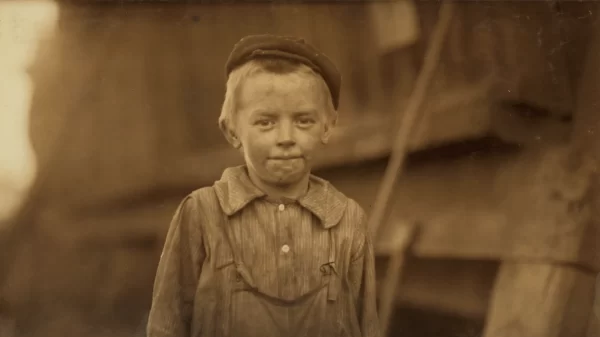
Opinion | It’s past time to end child labor: No ifs, ands, or buts
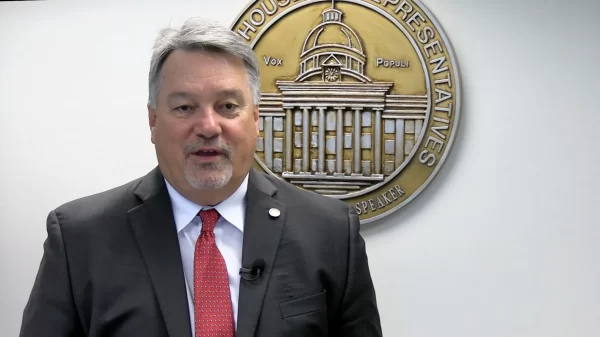
Opinion | Productive session offers promise that Alabama’s best days are yet to come
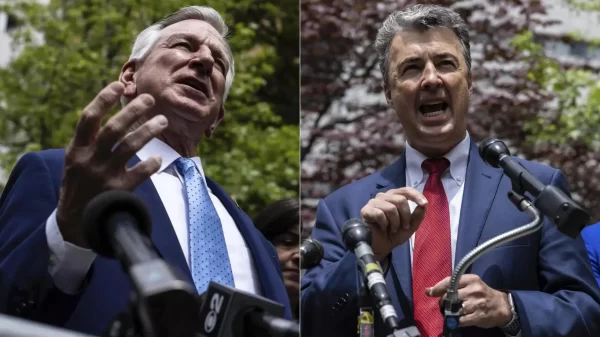
Opinion | The smallest men who ever lived

Opinion | Viral video proves Alabama Republicans are out of touch with the working class
The report provides a roadmap for how to transform Black Belt tourism into a catalyst for economic development.
Published on May 24, 2024 at 7:16 am CDT
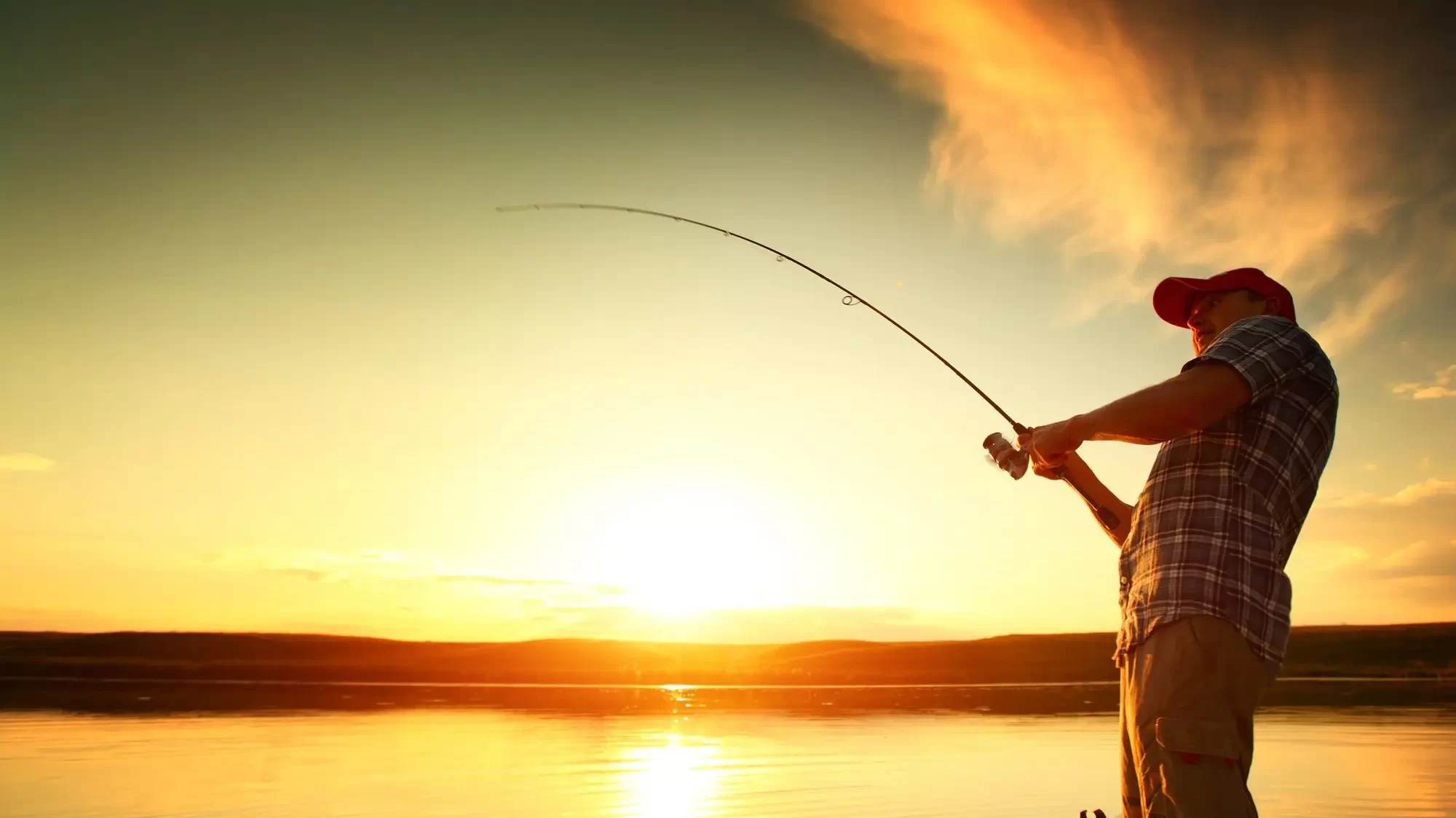
Alabama’s Black Belt has all the ingredients to become a premier ecotourism destination, according to a report produced by a renowned ecotourism expert who conducted a detailed assessment of tourism development potential in the region.
The report, authored by Costas Christ and Associates, and including Beyond Green Travel and The University of Alabama Center for Economic Development, recommends that tourism planning and development in the Black Belt focus on the three pillars of Nature, Culture and Community. It also urges local communities throughout the Black Belt to collaborate and work together to foster economic development throughout the region’s 23-county footprint.
“By emphasizing the conservation of nature and protection of cultural and historic sites, along with local community engagement, the Black Belt can become a leading ecotourism destination,” said Christ, who is a former editor and senior director for sustainability for National Geographic and one of the world’s top travel experts. “The Black Belt is a diamond in the rough. It just needs some polishing.”
Christ and his team produced the 80-page report after spending a year traveling throughout the Black Belt to assess the region’s current and potential tourism assets, and conducting more than 100 meetings with business owners, government officials, civil rights leaders and community-based tourism organizations. He presented the report, which outlines action items that can be accomplished in the next 12 to 18 months to grow Black Belt tourism according to the principles of destination stewardship, to key stakeholders at Arts Revive in Selma earlier this week.
A similar report was prepared in 2022 for the Coastal Alabama Partnership , also led by Christ and his team, and many of those recommendations to promote ecotourism in Mobile and Baldwin counties have since been funded and put into action.
“What we’ve done on Alabama’s Gulf Coast has been successful, and there’s no reason to think we can’t enjoy the same success in Alabama’s Black Belt,” said Coastal Alabama Partnership President and CEO Wiley Blankenship. “These areas can complement each other and provide visitors with unique, memorable and authentic travel experiences based upon best practices.”
Ecotourism is defined as responsible travel to natural areas that protects nature and sustains the well-being of local people, and it continues to be one of the fastest growing sectors of the tourism industry.
Christ said Millennial and GenZ travelers seek experiences that benefit local people and help to protect natural and cultural heritage when selecting a travel destination. That has created increased demand for outdoor recreation, historic sites, culinary experiences, nature travel and community-led activities, all of which can be found in abundance throughout the Black Belt.
That’s a promising baseline for the region’s tourism efforts, and Christ’s report provides a roadmap for how to transform Black Belt tourism into a catalyst for economic development, including the city of Selma, with its civil rights history and surrounding natural and cultural sites, as the tourism capital for the region.
“The Black Belt offers world-class recreational hunting and fishing, along with other outdoor activities such as birding, camping and hiking,” said Thomas Harris, ALBBAA founder and president of the organization’s board of directors. “We also have world renowned cultural events and festivals, as well as many historical sites. This ecotourism report highlights the vast potential for drawing visitors to the Black Belt and making the region a nationally and internationally recognized sustainable tourism destination.”
In addition to the report identifying Selma as the Black Belt’s tourism capital, it also highlights Mobile and Montgomery as “gateway cities” for visitors interested in ecotourism, heritage and civil rights history.
Some of the sites the report identifies for funding to support tourism development include the Foot Soldiers Park and Education Center in Selma, The Joe Farm in Newbern, Fort Mims in Stockton, Old Cahawba Archaeological Park in Orrville, Roland Cooper State Park near Camden, and Gee’s Bend , home of the annual Airing of the Quilts Festival.
While the region faces unique challenges, the report also notes they can be overcome through strategic planning and collaboration involving government agencies, businesses, non-profit organizations and community leaders.
“I was excited to read the Black Belt Ecotourism Report. It is a good roadmap to capitalize on all the beautiful places and people God has blessed us with in Alabama,” said Conservation Commissioner Chris Blankenship. “The opportunity to link the good things happening in Coastal Alabama through the Black Belt to Selma and Montgomery is phenomenal. As a member of the Alabama Black Belt Adventures Board, the Forever Wild Board, the Alabama Historical Commission, the Innovate Alabama Outdoor Recreation Council, the Alabama State Parks Foundation, and Commissioner of the Department of Conservation and Natural Resources, it is great to see all these organizations and more coming together to promote and enhance ecotourism and outdoor recreation in this sometimes underappreciated portion of our state.”
The Black Belt includes the following 23 counties: Barbour, Bullock, Butler, Choctaw, Clarke, Conecuh, Crenshaw, Dallas, Greene, Hale, Lee, Lowndes, Macon, Marengo, Monroe, Montgomery, Perry, Pickens, Pike, Russell, Sumter, Tuscaloosa and Wilcox.
The Alabama Political Reporter is a daily political news site devoted to Alabama politics. We provide accurate, reliable coverage of policy, elections and government.

Judge threatens to jail lawyers challenging state’s law banning gender-affirming care

Three babies left in Alabama’s Safe Haven Baby Boxes
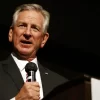
Featured Opinion
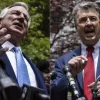
More from APR
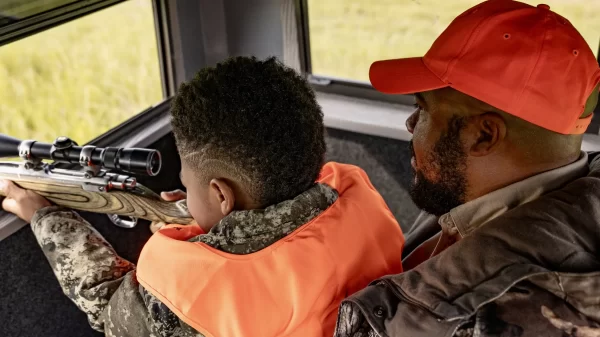
Report: Black Belt tourism pumps billions into Alabama’s economy
The report shows all 23 Black Belt counties have experienced tourism growth since 2020.
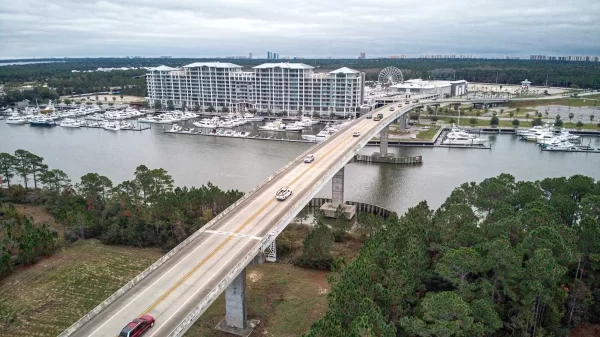
Opinion | Agreement on Foley Beach Express Bridge is victory for all Alabamians
As soon as the agreement is finalized in May, Alabamians and visitors alike will see immediate benefits.
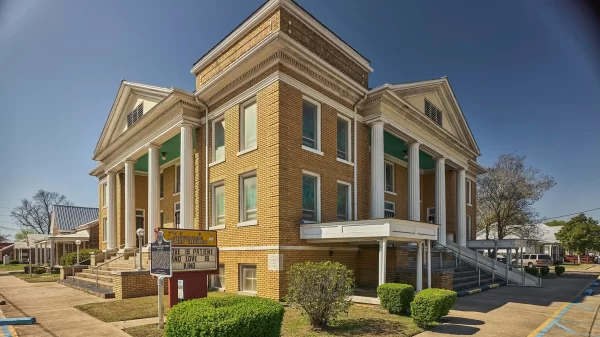
National Park Service awards $3 million to preserve historic Civil Rights sites in Alabama
Rep. Terri Sewell leads the congressional effort to increase funding for the African American Civil Rights Grant Program.
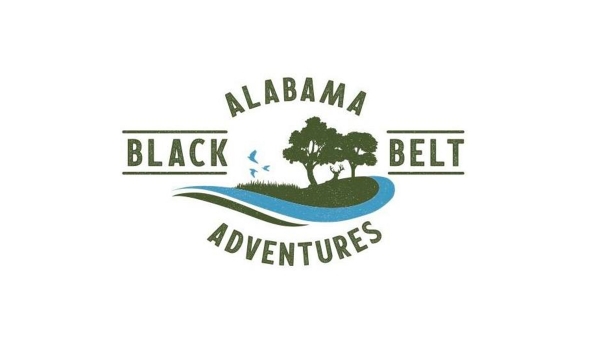
Environment
Albbaa’s big gobbler photo contest returns.
Alabama’s 2024 spring wild turkey season officially kicks off this weekend.
Language selection
- Français fr
Additional projects funded under the 2022 EAF small component call for proposals
From: Employment and Social Development Canada
Backgrounder
Additional projects funded under the 2022 EAF small component call for proposals:
- Abundant Life Church of Grande Prairie – Grande Prairie (funding amount: $8,633)
- Berean Church of God International – Edmonton (funding amount: $46,002)
- Central Alberta Immigrant Women's Association (CAIWA) – Red Deer (funding amount: $100,000)
- CentrePoint Church – Camrose (funding amount: $99,987)
- Credit Union Co-op Aquatic Centre – Rocky Mountain House (funding amount: $20,792)
- Emerald Community and Recreation Society – Calgary (funding amount: $100,000)
- Friends of the Millet Youth Society – Millet (funding amount: $100,000)
- Greater Athabasca Community Foundation – Boyle (funding amount: $100,000)
- Hyde Park Condominium Corporation – Edmonton (funding amount: $99,984)
- Irish Cultural Society of Calgary – Calgary (funding amount: $100,000)
- Italiano Please! – Calgary (funding amount: $32,489)
- Jewish Family Services – Edmonton (funding amount: $91,020)
- Lacombe Performing Art Centre, LPAC – Lacombe (funding amount: $61,559)
- Mile Zero Dance (MZD) – Edmonton (funding amount: $53,396)
- Pusha – Edmonton (funding amount: $100,000)
- Sage Seniors Association -- Edmonton (funding amount: $30,611)
- Shepherd’s Care Foundation – Edmonton (funding amount: $50,387)
- The MAD House Onoway Daycare & OSC – Onoway (funding amount: $100,000)
- Town of Bow Island – Bow Island (funding amount: $100,000)
- Town of Claresholm – Claresholm (funding amount: $100,000)
- Town of Coaldale – Coaldale (funding amount: $100,000)
- Town of Okotoks – Okotoks (funding amount: $100,000)
- Town of Three Hills – Three Hills (funding amount: $1,932)
- Union Station Church – Rocky View County (funding amount: $18,382)
- Universal Rehabilitation Service Agency – Calgary (funding amount: $31,267)
- Urban Society for Aboriginal Youth (USAY) – Calgary (funding amount: $100,000)
- Willow Ridge Community Association of Calgary – Calgary (funding amount: $31,266)
British Columbia
- Alderwood House School Southlands – Richmond (funding amount: $100,000)
- Arts Umbrella – Vancouver (funding amount: $100,000)
- Broadway Lodge – Vancouver (funding amount: $5,606)
- City of Kelowna – Kelowna (funding amount: $40,993)
- City of Prince Rupert – Prince Rupert (funding amount: $100,000)
- Community Impact Real Estate Society – Vancouver (funding amount: $26,982)
- Connecting Dots Foundation – Langley (funding amount: $100,000)
- Destination Osoyoos – Osoyoos (funding amount: $3,616)
- District of Clearwater – Clearwater (funding amount: $98,525)
- Elk Valley Family Society – Fernie (funding amount: $100,000)
- Harrison Tourism Society – Harrison Hot Springs (funding amount: $100,000)
- Kara-Kata Afrobeat Society of Canada – Mission (funding amount: $82,712)
- Lancaster Mobility – Surrey (funding amount: $9,002)
- Langley Meals on Wheels – Aldergrove (funding amount: $100,000)
- Lookout Housing and Health Society – New Westminster (funding amount: $69,566)
- Mayne Island Community Centre Society – Mayne Island (funding amount: $9,738)
- Network Hearing Health Ltd. – Port Coquitlam (funding amount: $19,470)
- PALS Autism Society – New Westminster (funding amount: $92,653)
- Pender Islands Health Care Society – Pender Island (funding amount: $100,000)
- Prophet River First Nation – Prophet River (funding amount: $100,000)
- Purcell International Preschool – Kimberley (funding amount: $89,042)
- Science of Spiritually Meditation & Ecology Centre – Richmond (funding amount: $39,221)
- Sooke Family Resource Society – Sooke (funding amount: $22,873)
- Stewart Public Library Association – Stewart (funding amount: $98,707)
- Sunshine Coast Community Services Society – Sechelt (funding amount: $100,000)
- The John Howard Society of Victoria – Victoria (funding amount: $100,000)
- Treehouse Therapy – Cumberland (funding amount: $84,613)
- Witset First Nation – Smithers (funding amount: $99,430)
- African Canadian Foundation for Culture and Economic Development Inc. – Winnipeg (funding amount: $100,000)
- Carman Dufferin Recreation (CDR) – Carman (funding amount: $60,076)
- Community Futures Westman Inc. – Brandon (funding amount: $51,006)
- Living Water Apostolic Fellowship Inc. – The Pas (funding amount: $22,410)
- Morris Community Pool – Morris (funding amount: $100,000)
- Municipality of Bifrost-Riverton – Arborg (funding amount: $38,578)
- Municipality of Souris-Glenwood – Souris (funding amount: $9,645)
- Notre Dame Splash Park Committee – Notre-Dame-de-Lourdes (funding amount: $100,000)
- Pierson Rec-Rejuv Inc. – Pierson (funding amount: $74,177)
- Portage Regional Recreation Authority Inc. (PRRA) – Portage la Prairie (funding amount: $48,633)
- The Redeemed Christian Church of God (RCCG) Solution Sanctuary Inc. – Winnipeg (funding amount: $100,000)
- Sara Riel – Winnipeg (funding amount: $17,472)
- St. Andrews Community Club (STACC) – St. Andrews (funding amount: $44,589)
- The First UU Church of Winnipeg – Winnipeg (funding amount: $79,599)
- Visions of Independence – Winnipeg (funding amount: $93,382)
New Brunswick
- Canada Games Aquatic Centre – Saint John (funding amount: $81,602)
- Les Oeuvres de l'Hôtel-Dieu Saint-Joseph Inc. – Saint-Basile (funding amount: $100,000)
- Saint John Free Public Library – Saint John (funding amount: $74,633)
Newfoundland and Labrador
- Echo Pond Environmental Education Centre – St. John’s (funding amount: $61,873)
- Evangel Pentecostal Church – Gander (funding amount: $8,991)
- Town of Gillams – Gillams (funding amount: $78,141)
Northwest Territories
- Town of Norman Wells – Norman Wells (funding amount: $50,000)
Nova Scotia
- Breton Ability Centre – Sydney (funding amount: $68,152)
- Cape Breton Exhibition – North Sydney (funding amount: $75,136)
- Cape Breton University – Sydney (funding amount: $100,000)
- Chafe’s Flooring & Furniture – Port Hawkesbury (funding amount: $59,475)
- Community Support Society of River John – River John (funding amount: $83,292)
- Ivor MacDonald Memorial Rink – Thorburn (funding amount: $46,828)
- Lockeport Recreation Department – Lockeport (funding amount: $42,581)
- Mill Road Social Enterprises – Iverness (funding amount: $53,357)
- Neptune Theatre Foundation – Halifax (funding amount: $12,361)
- Northumberland Fisheries Museum – Pictou (funding amount: $27,821)
- Nova Scotia Community College Foundation – Halifax (funding amount: $100,000)
- Nova Scotia Sport Hall of Fame – Halifax (funding amount: $100,000)
- Plymouth Community Centre – Annapolis Royal (funding amount: $25,760)
- Riverside Community Hall or Portapique Community Hall – Upper Economy (funding amount: $100,000)
- Royal Canadian Legion 74 Dr C B Lumsden – Wolfville (funding amount: $100,000)
- Royal Canadian Legion Branch 79 – New Ross (funding amount: $25,773)
- S.S. Atlantic Heritage Park Society – Terence Bay (funding amount: $29,998)
- Savoy Theatre – Glace Bay (funding amount: $84,960)
- The Washbrook Greenway Coalition – Sydney (funding amount: $53,764)
- Town of Annapolis Royal – Annapolis Royal (funding amount $81,656)
- Veith House – Halifax (funding amount: $14,253)
- Village of Chester – Chester (funding amount: $100,000)
- Village of Pugwash – Pugwash (funding amount: $100,000)
- Pinnguaq Association – Iqaluit (funding amount: $100,000)
- 10 Carden Shared Space (10C) – Guelph (funding amount: $100,000)
- 105 Gibson Centre – Markham (funding amount: $100,000)
- African, Caribbean, Black Wellness Resource Centre Corporation – Ottawa (funding amount: $76,707)
- Blue Mountain Community Church – Thornbury (funding amount: $23,133)
- Bowmanville Older Adult Association – Bowmanville (funding amount: $3,322)
- Canadian Association of the Deaf – Association des Sourds du Canada – Ottawa (funding amount: $85,885)
- Caribbean Centre – Windsor (funding amount: $83,663)
- Centre for Print and Media Arts – Hamilton (funding amount: $100,000)
- Chabad on the Avenue – Toronto (funding amount: $87,433)
- Christie Ossington Neighbourhood Centre – Toronto (funding amount: $33,472)
- Circle of Care Sinai Health – Toronto (funding amount: $61,226)
- City of Belleville – Belleville (funding amount: $100,000)
- City of Kenora – Kenora (funding amount: $ 100,000)
- City of Mississauga – Mississauga (funding amount: $66,728)
- City of Niagara Falls – Niagara Falls (funding amount: $63,372)
- City of Pembroke – Pembroke (funding amount: $26,682)
- Roman Catholic Episcopal Corporation St. Ignatius the Martyr Parish – Ottawa (funding amount: $56,257)
- City of St. Thomas – St. Thomas (funding amount: $100,000)
- Congregation Beit Tikvah of Ottawa – Nepean (funding amount: $42,879)
- Corktown Co-operative Homes Inc. – Hamilton (funding amount: $100,000)
- Corporation of the Town of Coburg – Coburg (funding amount: $100,000)
- Corporation of the Town of Huntsville – Huntsville (funding amount: $17,966)
- Corporation of the Township of Howick – Gorrie (funding amount: $79,124)
- Corporation of the Township of Madawaska Valley – Barry’s Bay (funding amount: $100,000)
- Croatian Society Schumacher – Schumacher (funding amount: $100,000)
- Crossing Community Church – Acton (funding amount: $100,000)
- Dayspring Church of Windsor – Windsor (funding amount: $82,765)
- Divine Word Evangelical Lutheran Church – Nepean (funding amount: $7,684)
- Drayton Pharmacy – Drayton (funding amount: $58,164)
- Dunsford United Church – Dunsford (funding amount: $23,269)
- Eganville and District Seniors – Eganville (funding amount: $100,000)
- Elizabeth Fry Society of Northwestern Ontario – Thunder Bay (funding amount: $76,586)
- ESS Support Services – York (Toronto) (funding amount: $33,358)
- Family Services of Peel – Mississauga (funding amount: $45,100)
- First Portuguese Canadian Cultural Centre of Toronto – Toronto (funding amount: $94,588)
- Five Counties Children’s Centre – Peterborough (funding amount: $100,000)
- Forest Hill United Church – Toronto (funding amount: $100,000)
- Fowlers Corners & District Lions Club – Omemee (funding amount: $73,362)
- Friends of Lubavitch London Ontario – London (funding amount: $75,393)
- Future Church – Brampton (funding amount: $100,000)
- Gateway Residential & Community Support Services of Niagara Inc. – Welland (funding amount: $16,697)
- Gentle Shepherd Community Church-Grey County – Flesherton (funding amount: $12,259)
- Goderich to Guelph Rail Trail Experience – Waterloo (funding amount: $100,000)
- Goodwill Industries, Ontario Great Lakes – London (funding amount: $100,000)
- Grace Place – Brampton (funding amount: $11,803)
- GRCA – Cambridge (funding amount: $83,068)
- Hamilton Christian Fellowship – Hamilton (funding amount: $100,000)
- Harmony in Action – Windsor (funding amount: $27,482)
- Humane Society London & Middlesex – London (funding amount: $100,000)
- IOOF Seniors Homes Inc. – Barrie (funding amount: $51,784)
- Kensington Patty Palace – Scarborough (funding amount: $100,000)
- Kingston Co-operative Homes, Inc. – Kingston (funding amount: $100,000)
- Lavender Polo Farm – East Gwillimbury (funding amount: $100,000)
- Living Water Counselling Centre – Richmond Hill (funding amount: $100,000)
- London Track 3 Ski School – London (funding amount: $100,000)
- Madaniyya Academy – Mississauga (funding amount: $93,631)
- Martin Luther Church – Toronto (funding amount: $44,478)
- Masjid Darul Iman – Markham (funding amount: $92,691)
- Maximilian Kolbe Foundation – Mississauga (funding amount: $100,000)
- MLP Residence – Picton (funding amount: $49,829)
- Mouvement d'implication francophone d'Orléans (MIFO) – Ottawa (funding amount: $100,000)
- Municipality of Bayham – Straffordville (funding amount: $49,606)
- Municipality of Brockton – Walkerton (funding amount: $80,900)
- Municipality of Clarington – Bowmanville (funding amount: $100,000)
- Municipality of Machin – Vermilion Bay (funding amount: $100,000)
- Municipality of South Huron – Exeter (funding amount: $29,611)
- Newcastle United Church – Newcastle (funding amount: $22,775)
- New Life Seventh-Day Adventist Church – Oshawa (funding amount: $61,909)
- Optimum Health Center – Sudbury (funding amount: $100,000)
- Ottawa-Carleton Association for Persons with Developmental Disabilities (OCAPDD) – Ottawa (funding amount: $40,066)
- Paris Port Dover Pipe Band – St. George (funding amount: $13,516)
- Pathways Employment Help Centre – London (funding amount: $83,878)
- Peel Career Assessment Services Inc. – Mississauga (funding amount: $62,289)
- Polka Dot Academy Montessori Daycare – Guelph (funding amount: $100,000)
- Quantum Sports and Learning Association – Toronto (funding amount: $97,137)
- R.P.L Properties (Bayfield) Limited – Bayfield (funding amount: $26,622)
- Rapha Christian Centre – Windsor (funding amount: $100,000)
- Reconnect Community Health Services – Toronto (funding amount: $79,418)
- ReForest London – London (funding amount: $100,000)
- Region of Waterloo (Owner/Operator of Grand River Transit) – Kitchener (funding amount: $100,000)
- Ripley-Huron Veterinary Clinic – Port Elgin (funding amount: $100,000)
- Royal City Mission – Guelph (funding amount: $49,456)
- Ryde Centennial Free Methodist Church – Gravenhurst (funding amount: $8,361)
- SAAAC Autism Centre – Scarborough (funding amount: $100,000)
- San Lorenzo Latin American Community Centre – Toronto (funding amount: $94,679)
- Spectrum Gymnastics – Simcoe (funding amount: $15,383)
- SSCC354 – Barrie (funding amount: $82,340)
- St. Paul’s Anglican Church – Port Dover (funding amount: $94,128)
- Sudbury United Pentecostal Church – Sudbury (funding amount: $71,307)
- The Corporation of the City of Windsor – Windsor (funding amount: $100,000)
- The Corporation of the Township of South Stormont – Long Sault (funding amount: $68,000)
- The Friends of Chippewa Park – Thunder Bay (funding amount: $20,921)
- The Municipality of Arran-Elderslie – Chesley (funding amount: $70,348)
- The Municipality of Killarney – Killarney (funding amount: $28,605)
- The St. Leonard’s Society of Hamilton – Hamilton (funding amount: $18,939)
- Tipi Moza (Iron Homes) – Kingston (funding amount: $26,330)
- Torah Day School of Ottawa – Ottawa (funding amount: $56,488)
- Toronto and Region Conservation Authority – Toronto (funding amount: $64,136)
- Town of Espanola – Espanola (funding amount: $12,337)
- Town of Essex – Essex (funding amount: $100,000)
- Town of Halton Hills – Halton Hills (funding amount: $64,463)
- Town of NEMI – Little Current (funding amount: $82,056)
- Township of Gauthier – Dobie (funding amount: $100,000)
- Township of South Glengarry – Lancaster (funding amount: $81,169)
- Township of Stone Mills – Centreville (funding amount: $100,000)
- Township of Tay – Victoria Harbour (funding amount: $32,692)
- United College – Waterloo (funding amount: $77,082)
- Vaughan Kids Daycare – Vaughan (funding amount: $73,976)
- Villa Charities Inc. – Toronto (funding amount: $58,174)
- Vishva Shakti Durga Mandir Association – Ottawa (funding amount: $54,921)
- Vision of Hope Resource Centre – Brampton (funding amount: $45,152)
- Wellington Pentecostal Church – Wellington (funding amount: $100,000)
- Xolo Inc. – Toronto (funding amount: $47,224)
Prince Edward Island
- Cape Bear Lighthouse & Marconi Station Incorporated – Cape Bear (funding amount: $31,889)
- Stepping Stone Child Care – Charlottetown (funding amount: $91,506)
- TCAP Co-operative Ltd. – Montague (funding amount: $14,133)
- Tremploy Inc. – Charlottetown (funding amount: $97,713)
- West Royalty Fitness Centre Ltd. – Charlottetown (funding amount: $100,000)
- Aux Bonheurs des Aînés Lanaudière – Crabtree (funding amount: $100,000)
- Café du Centre – Repentigny (funding amount: $75,337)
- Carrefour d'action bénévole du Haut Saint-Maurice – La Tuque (funding amount: $97,333)
- Carrefour jeunesse-emploi MRC de Maskinongé – Louiseville (funding amount: $100,000)
- Centre d'action bénévole de la Missisquoi Nord – Mansonville (funding amount: $42,420)
- Centre des femmes de Longueuil – Longueuil (funding amount: $100,000)
- Club Jeunes de Coeur de Latulipe – Latulipe (funding amount: $100,000)
- Comité social Centre-Sud Inc. – Montréal (funding amount: $100,000)
- Coopérative d’habitation Le retour à l'école – Montréal (funding amount: $100,000)
- Église Chrétienne de la Grâce – Montréal (funding amount: $100,000)
- Eglise Évangélique Haïtienne de L'alliance Chrétienne et Missionnaire – Montréal (funding amount: $100,000)
- Fondation les Petits Rois – Montréal (funding amount: $79,762)
- Friendship Circle Québec – Montréal (funding amount: $100,000)
- Jevi Centre de Prévention du Suicide-Estrie – Sherbrooke (funding amount: $100,000)
- La Société Saint-Vincent de Paul – Montréal (funding amount: $100,000)
- Le Centre des arts visuels / The Visual Arts Centre – Montréal (funding amount: $100,000)
- Légion royale canadienne des Îles – Cap-aux-Meules (funding amount: $100,000)
- Les Appartements Delphine, La Prionnière – Montréal (funding amount: $100,000)
- Les Apprentis (centre d’apprentissage pour la déficience intellectuelle) – Gatineau (funding amount: $100,000)
- Les Chevaliers de Colomb Conseil 1468 Joliette – Joliette (funding amount: $100,000)
- Loisirs Duberger les Saules – Québec (funding amount: $48,176)
- Municipalité de Béarn – Béarn (funding amount: $100,000)
- Municipalité de la Paroisse de Saint-Damien-de-Buckland – Saint-Damien-de-Buckland (funding amount: $100,000)
- Municipalité de Sainte-Christine-d'Auvergne – Sainte-Christine-d'Auvergne (funding amount: $100,000)
- Municipalité de Saint-Malachie – Saint-Malachie (funding amount: $100,000)
- Municipalité de Stratford – Stratford (funding amount: $100,000)
- Municipalité de Val-Brillant – Val-Brillant (funding amount: $57,009)
- Municipalité Saint-Casimir – Saint-Casimir (funding amount: $15,672)
- Municipalité Saint-Paul-d'Abbotsford – Saint-Paul-d'Abbotsford (funding amount: $100,000)
- Paradis Plein Air de l'Archipel Inc. – Fatima (funding amount: $100,000)
- Projaide Inc. – Montréal (funding amount: $51,158)
- Société Alzheimer du Bas-Saint-Laurent – Matane (funding amount: $100,000)
- Ville de Trois-Rivières – Trois-Rivières (funding amount: $100,000)
Saskatchewan
- Black Star Accounting Services – Regina (funding amount: $100,000)
- McNab Regional Park – Watson (funding amount: $36,000)
- Meadow Lake Curling Club – Meadow Lake (funding amount: $57,869)
- OUTSaskatoon – Saskatoon (funding amount: $56,872)
- Redvers & District Recreation Centre – Redvers (funding amount: $9,645)
- Regina Beach Leisure Time Club – Regina Beach (funding amount: $19,402)
- Rocanville Recreation Centre – Rocanville (funding amount: $38,870)
- Rural Municipality of Milton no. 292 – Marengo (funding amount: $85,877)
- The Village of Spy Hill – Spy Hill (funding amount: $100,000)
- Town of Naicam – Naicam (funding amount: $17,945)
- Waterski and Wakeboard Saskatchewan – Saskatoon (funding amount: $38,789)
- Watson & District Heritage Museum – Watson (funding amount: $80,000)
Page details

IMAGES
COMMENTS
Tourism Tip: Address the impacts of climate change by safeguarding cultural resources and fostering cultural resilience through identifying, documenting and/or collecting cultural heritage and community experiences. First Nations Development Institute Advancing Tribal Nature-Based Solutions. Deadline: May, 22, 2024
Below is a link to the Heritage Tourism Supporting Documents Checklist. This checklist includes all of the attachments for the Heritage Tourism application. The attachments must be uploaded onto a USB drive and delivered either via mail or in-person to the Trust office by April 18, 2024 at 4:00pm. If you are having trouble completing all of the ...
World Heritage partnerships for conservation. Ensuring that World Heritage sites sustain their outstanding universal value is an increasingly challenging mission in today's complex world, where sites are vulnerable to the effects of uncontrolled urban development, unsustainable tourism practices, neglect, natural calamities, pollution, political instability, and conflict.
An official form of the United States government. Provided by Touchpoints. The National Park Service offers around 20 different grant programs that support educational and preservation activities for cultural resources across the United States. Grants also support consultation and repatriation of human remains under NAGPRA.
ARC investments help communities revitalize historic buildings, plan around local arts and cultural heritage, sustainably utilize outdoor spaces for recreation and tourism, and more. In Fiscal Year 2020, ARC grants invested nearly $6.4 million in 23 projects to build Regional culture and tourism.
Each year, millions of travelers visit America's historic places. The National Trust for Historic Preservation defines heritage tourism as "traveling to experience the places, artifacts, and activities that authentically represent the stories and people of the past and present." A high percentage of domestic and international travelers participate in cultural and/or heritage activities ...
The Inspire Iowa Cultural Tourism Grant program will support a limited number of highly visible and high-impact arts, culture and heritage events, performances, productions or exhibitions. Projects will attract new visitors to Iowa communities and showcase our state as a cultural tourism destination.
According to the 2010 Culture Satellite Account figures, arts, culture and heritage contribute about $868 million to Nova Scotia's economy, and more than 14,000 jobs across the province. A variety of funding programs, grants and awards are available for individuals and organizations in Nova Scotia.
The Heritage Preservation Grant promotes tourism through historic preservation projects and activities inclusive of all stories rooted in history and heritage. Heritage Preservation Grants are preservation grants for capital, planning, educational, or marketing projects at historically designated sites. Funding for eligible projects is made ...
Services. Facilitate the development and execution of a forthcoming Citywide Cultural and Heritage Tourism Plan, informed through a public input process; administer Hotel Occupancy Tax funds allocated to the Historical Preservation Fund, which is the primary funding source for the Heritage Grant program, to support thriving establishments host long-term and short-term visitors; and help build ...
Non-commercial Funding Programs; Indigenous Cultural Heritage Program: Community Healthy Living Fund: Publishers Assistance Program: Cultural Events Fund: Tourism Market Readiness Subsidy Program: Culture Economic Development Program: ... Tourism, Culture, Arts and Recreation . P.O. Box 8700.
World Heritage partnerships for conservation. Ensuring that World Heritage sites sustain their outstanding universal value is an increasingly challenging mission in today's complex world, where sites are vulnerable to the effects of uncontrolled urban development, unsustainable tourism practices, neglect, natural calamities, pollution, political instability, and conflict.
The Department of Communities, Culture, Tourism and Heritage helps businesses and communities grow by providing program and event funding for arts, culture and heritage, sport and recreation, cultural identity and languages, and tourism. Grants and funding programs are available for: businesses; individuals
Arts and Culture Grants aim to boost the local economy by attracting overnight visitors who are interested in experiencing the artistic and cultural offerings of a people and a place while mitigating any negative impacts on residents, social services, and public infrastructure. ... Cultural Heritage Tourism . Diversifying, expanding, or ...
UNESCO is launching the fifteenth call for applications to the International Fund for Cultural Diversity (IFCD).Through an open and competitive process, projects will be selected based on their ability to generate concrete and lasting results towards the development of the creative sectors in developing countries that are Parties to the 2005 Convention.
Canada Cultural Spaces Fund. The Canada Cultural Spaces Fund supports the improvement of physical conditions for artistic creativity and innovation. Canada History Fund. The Canada History Fund supports the development of learning materials and activities that contribute to increasing Canadians' knowledge about Canada. Canada Media Fund.
This user-friendly tool presents available funding opportunities for the cultural and creative sectors in EU programmes 2021-2027. The CulturEU funding guide is available as an interactive online webtool and as a printable guidebook. It covers opportunities linked to around 20 EU funding programmes that can support projects with a cultural and ...
The Department of Communities, Culture, Tourism and Heritage helps protect and promote Nova Scotia's culture and heritage. We help businesses and communities grow by providing program and event funding for arts, culture and heritage, sport and recreation and cultural identity and languages. We also provide leadership to creative and cultural ...
Montpelier, Vt. - Governor Phil Scott and the Vermont Department of Tourism and Marketing today announced applications are now being accepted for Transformational Tourism, Events, and Regional Marketing (T-TERM) grants. These grants are funded by the U.S. Economic Development Administration as part of a specific American Rescue Plan Act ...
Tourism, Heritage and Culture . Government of New Brunswick. Services. Results 1 - 25 of 69 100. 50. 25. Results per page. Title Fees Forms Contacts Online; Anchorage Provincial Park : Art Bank - Exhibition Program ... Grants : CollectionArtNB - Acquisition Program : CollectionArtNB - Indigenous Acquisition Program ...
Heritage. Heritage Education. The Heritage Education Section aims to increase knowledge and awareness of New Brunswick's history and heritage resources by promoting understanding of cultural diversity and encouraging this diversity through the following activities. << more.
Arts, culture, festivals and outdoor adventures - explore the many authentic New Brunswick experiences and attractions offered across our province and plan your trip. Explore our parks From mountain trails to picture perfect coastlines, we invite you to come and explore all the natural beauty, space and experiences our parks have to offer.
The Heritage Management Organization (HERITΛGE) is launching a new call for concept notes for small grants ($5000-$50000) for organizations, groups, and individuals working with heritage in Africa. The grants are part of our Heritage Management Project - Africa (HerMaP-Africa) which is funded by the Mellon Foundation's Humanities in Place ...
Trenton, NJ - The New Jersey Cultural Trust, in partnership with the New Jersey State Council on the Arts (Arts Council), has released the guidelines for its Fiscal Year 2025 grant program, Institutional and Financial Stabilization Grants for Arts Organizations (IFS Arts).. The IFS Arts program addresses the financial and institutional challenges that threaten nonprofit arts organizations ...
8 likes, 0 comments - branttourism1 on May 21, 2024: "Are you wanting to learn more about participating in Culture Days, including funding opportunities? Join us this Thursday for a free info...". County of Brant Tourism | Are you wanting to learn more about participating in Culture Days, including funding opportunities?
Funding for the arts must be brought to a sustainable level for the next EU Framework Programme for Research and Innovation . ... The EU's financial instruments are a significant enabler also for the Finnish cultural sector, cultural heritage and cultural tourism. Latest news Show all news Prizes, grants and acquisitions in Kuvan Kevät 2024 ...
Christ said Millennial and GenZ travelers seek experiences that benefit local people and help to protect natural and cultural heritage when selecting a travel destination. ... with its civil rights history and surrounding natural and cultural sites, as the tourism capital for the region. ... Some of the sites the report identifies for funding ...
S.S. Atlantic Heritage Park Society - Terence Bay (funding amount: $29,998) Savoy Theatre - Glace Bay (funding amount: $84,960) The Washbrook Greenway Coalition - Sydney (funding amount: $53,764) Town of Annapolis Royal - Annapolis Royal (funding amount $81,656) Veith House - Halifax (funding amount: $14,253)
The first round of funding secured 10 billion yen for the Atona Impact Fund . View File. ATONA brand logo View File. ... Featuring modern design grounded in Japan's rich cultural heritage and history, ATONA properties will typically have 30 to 50 guestrooms, and will feature restaurants with open kitchens and bars showcasing seasonal ...